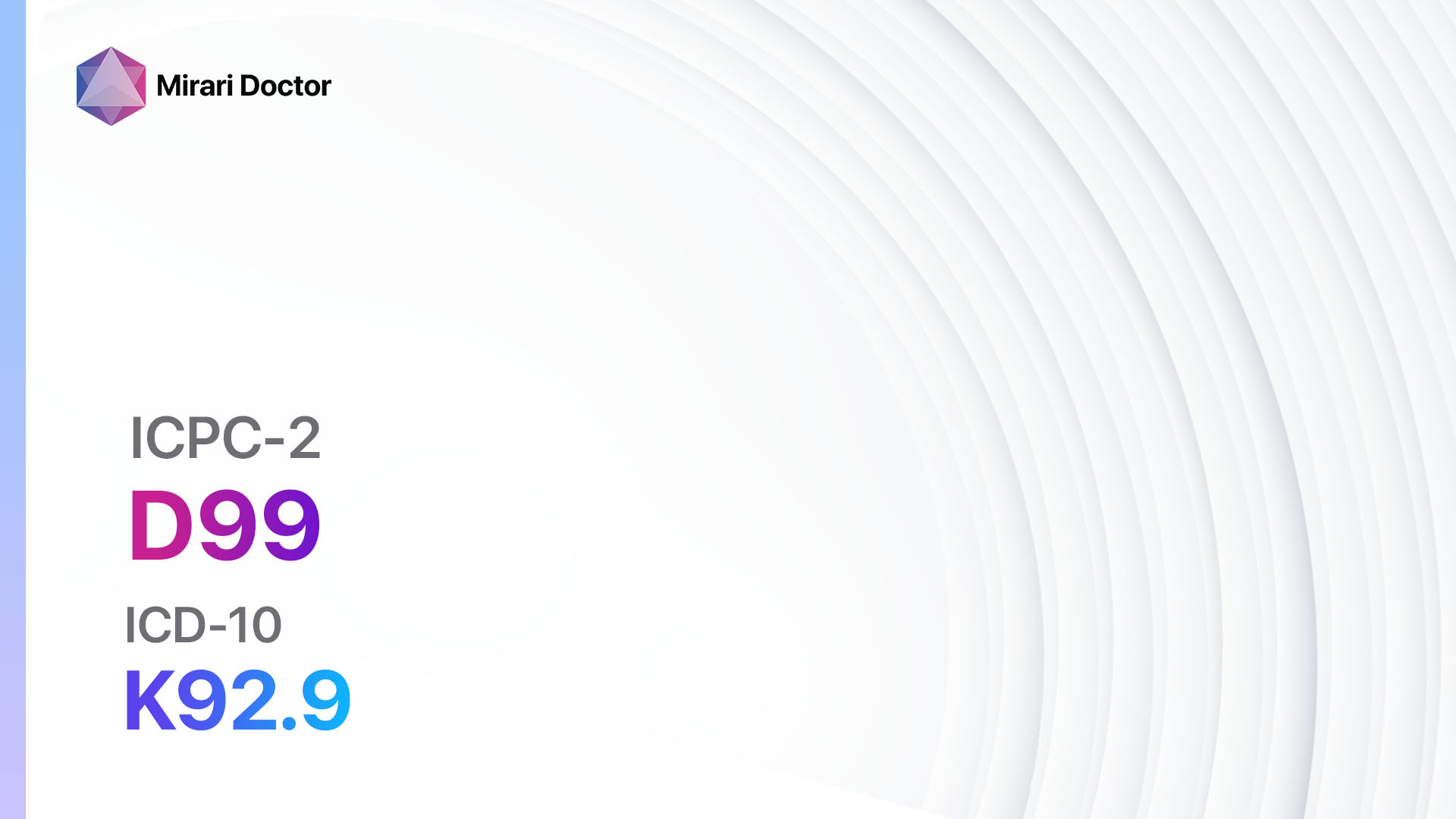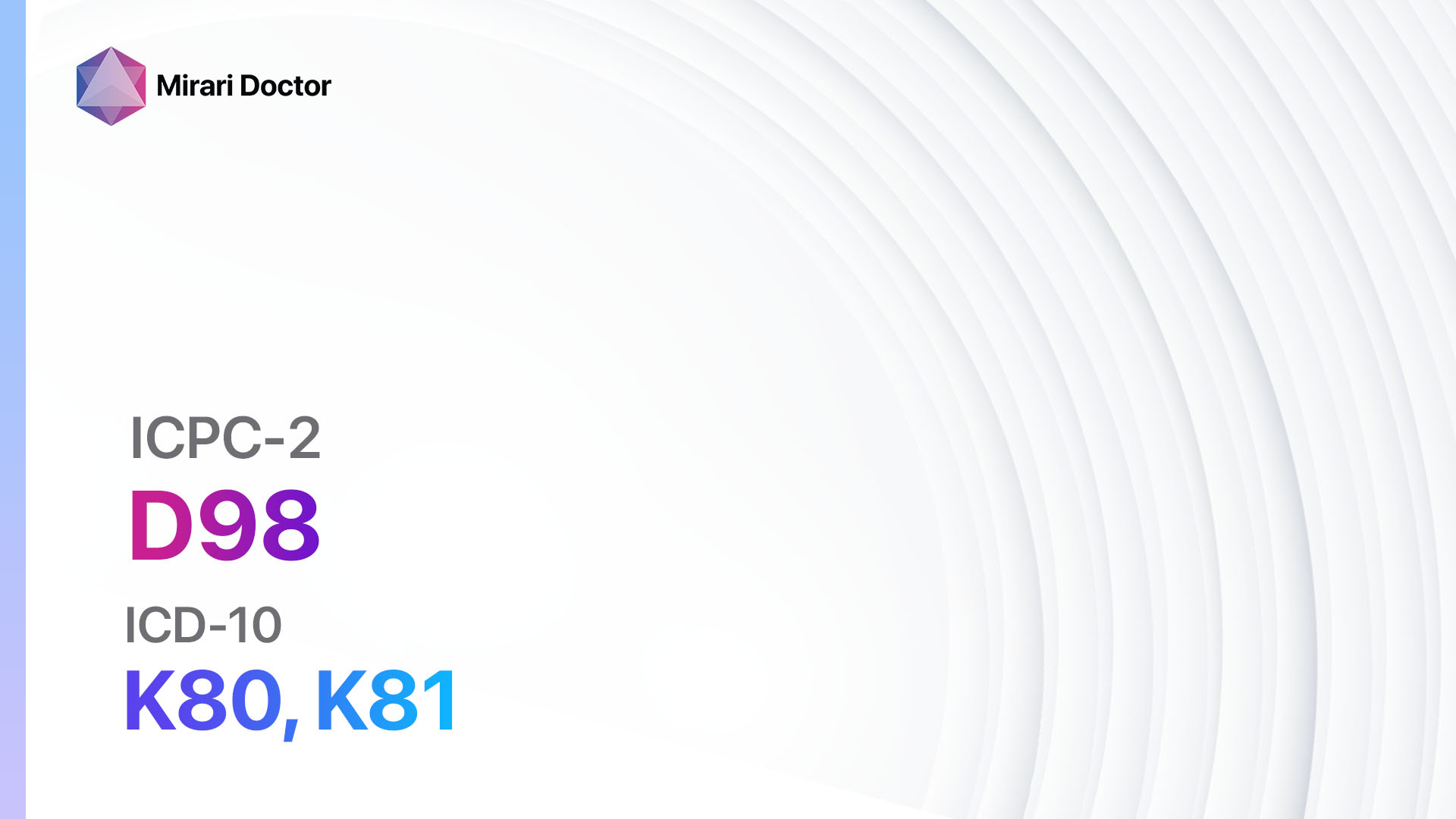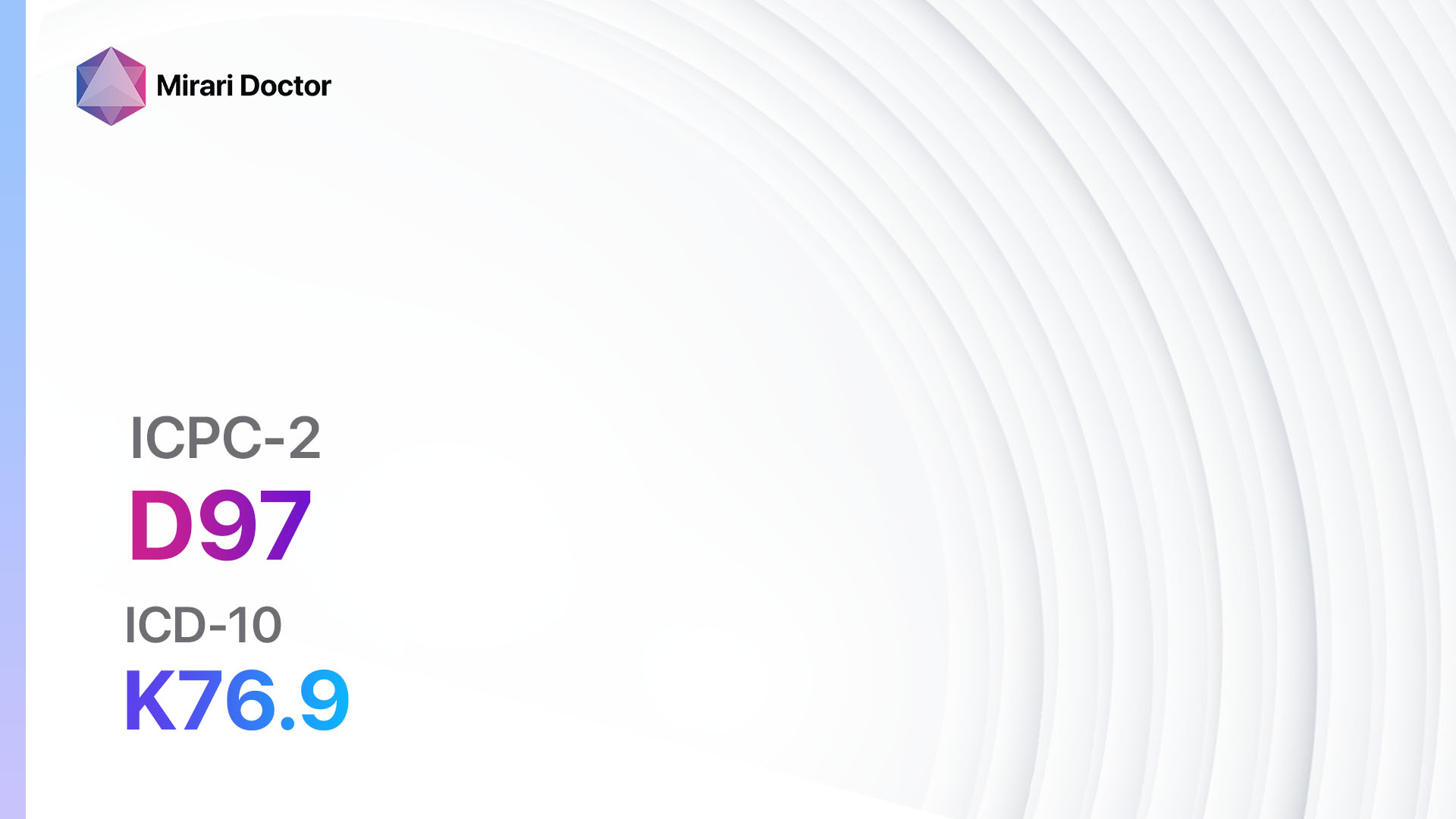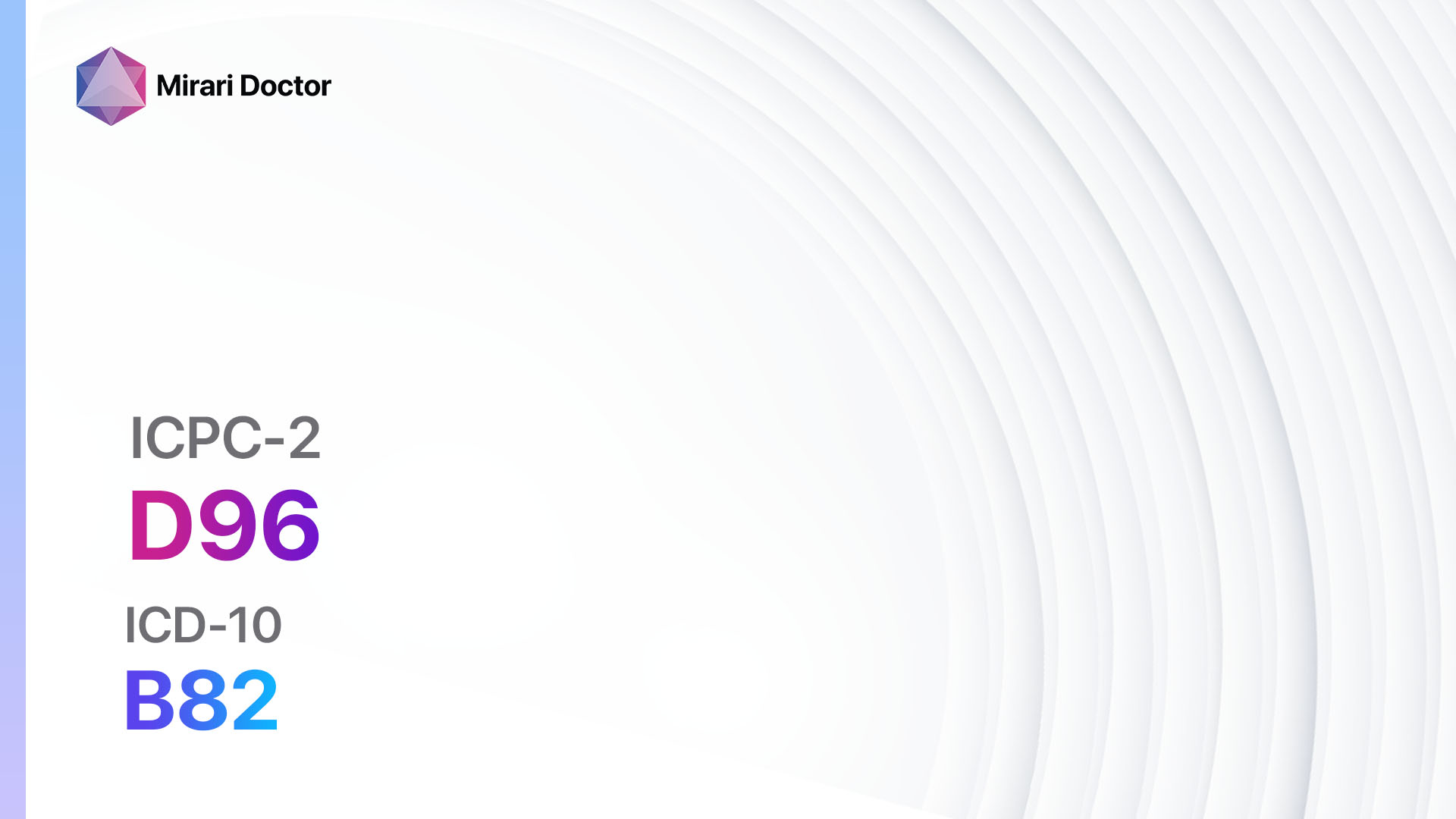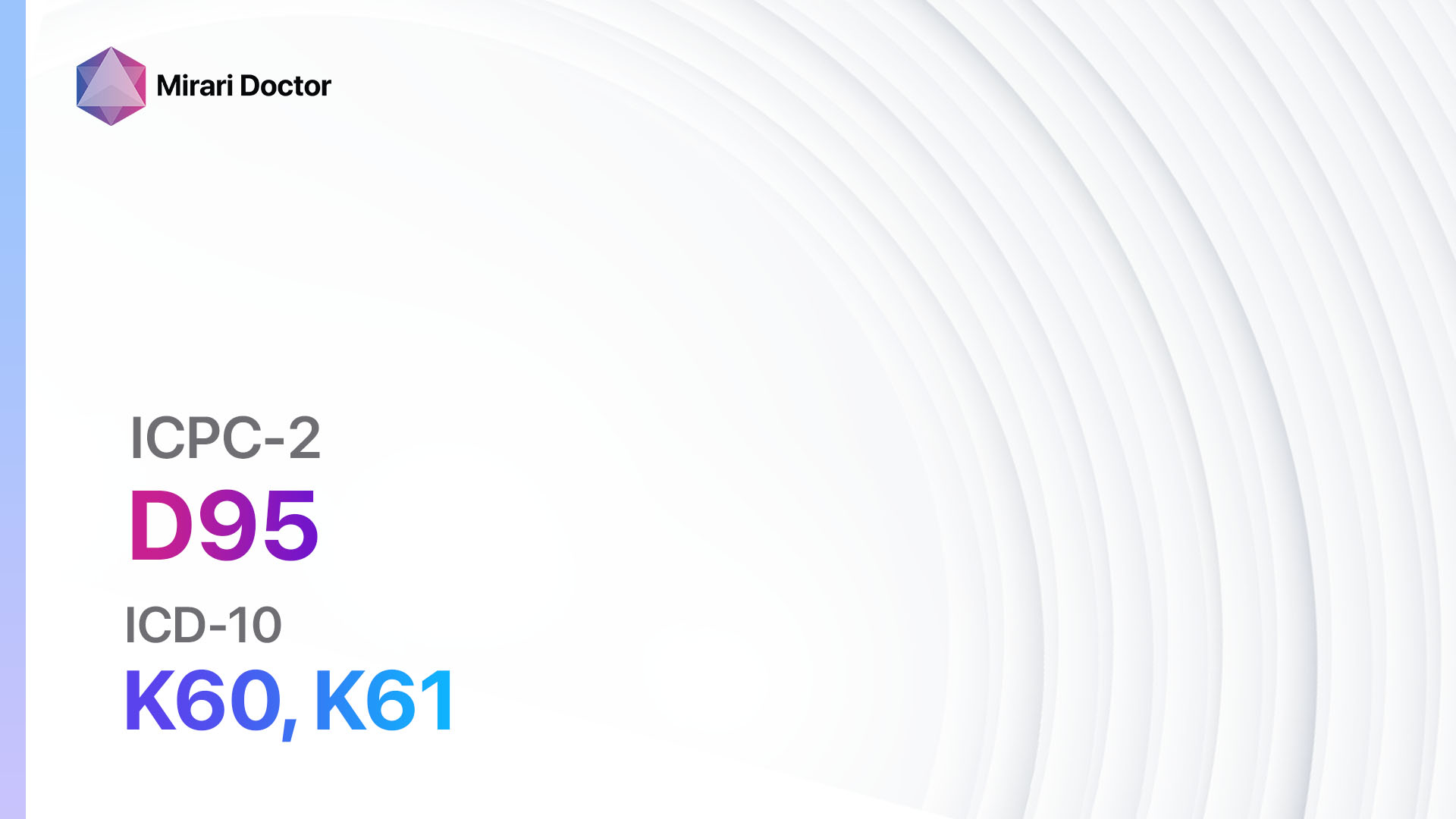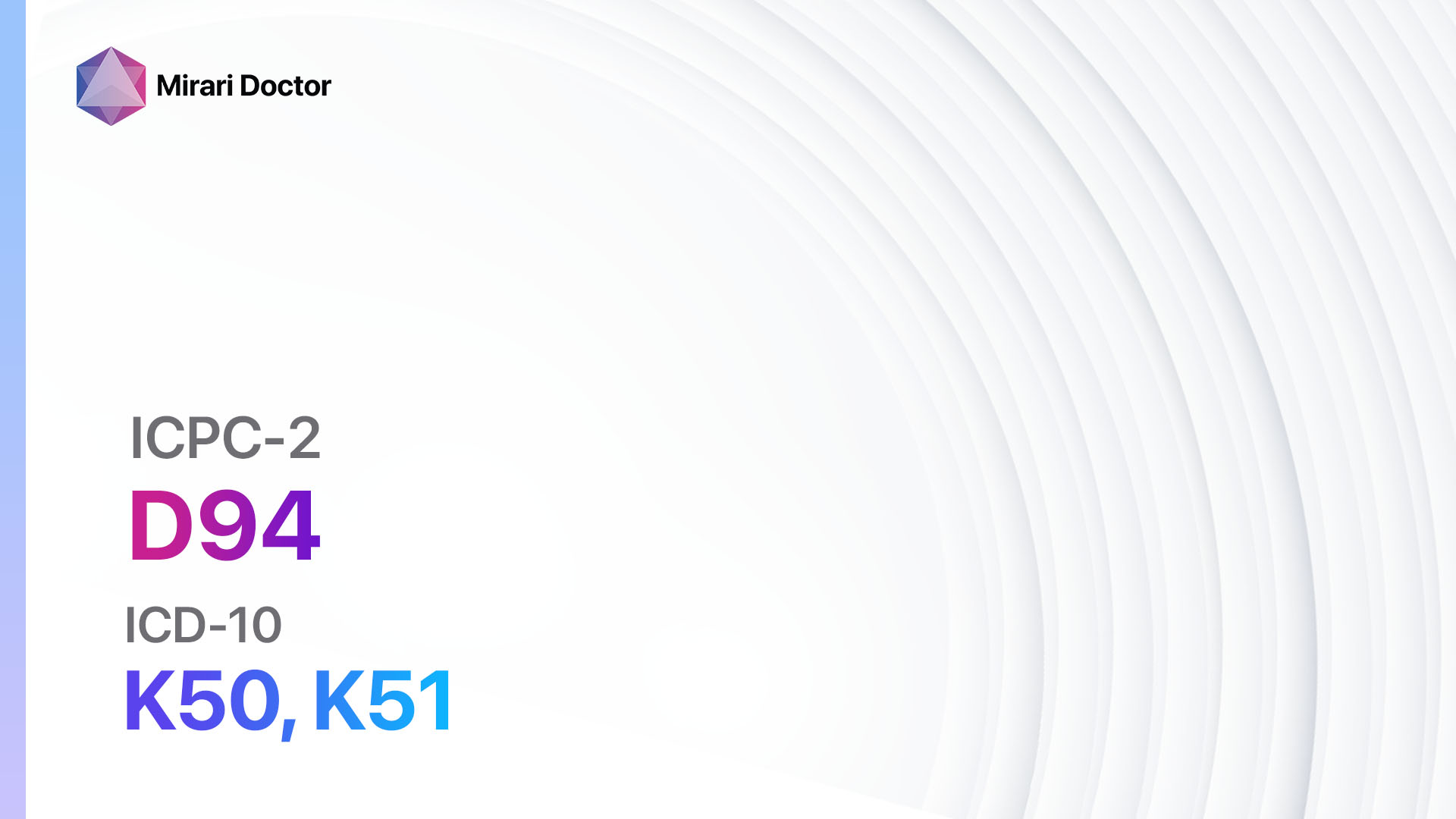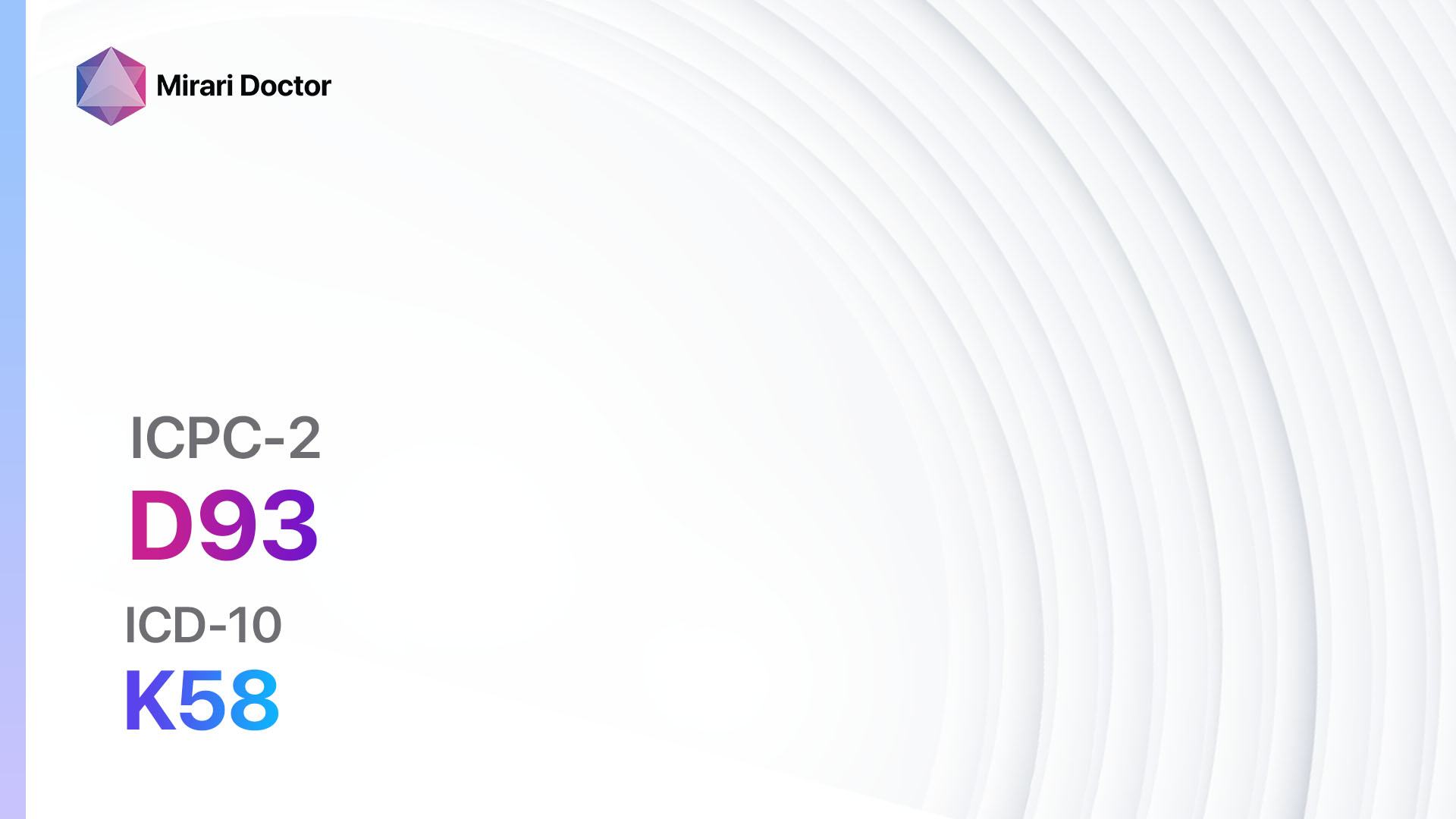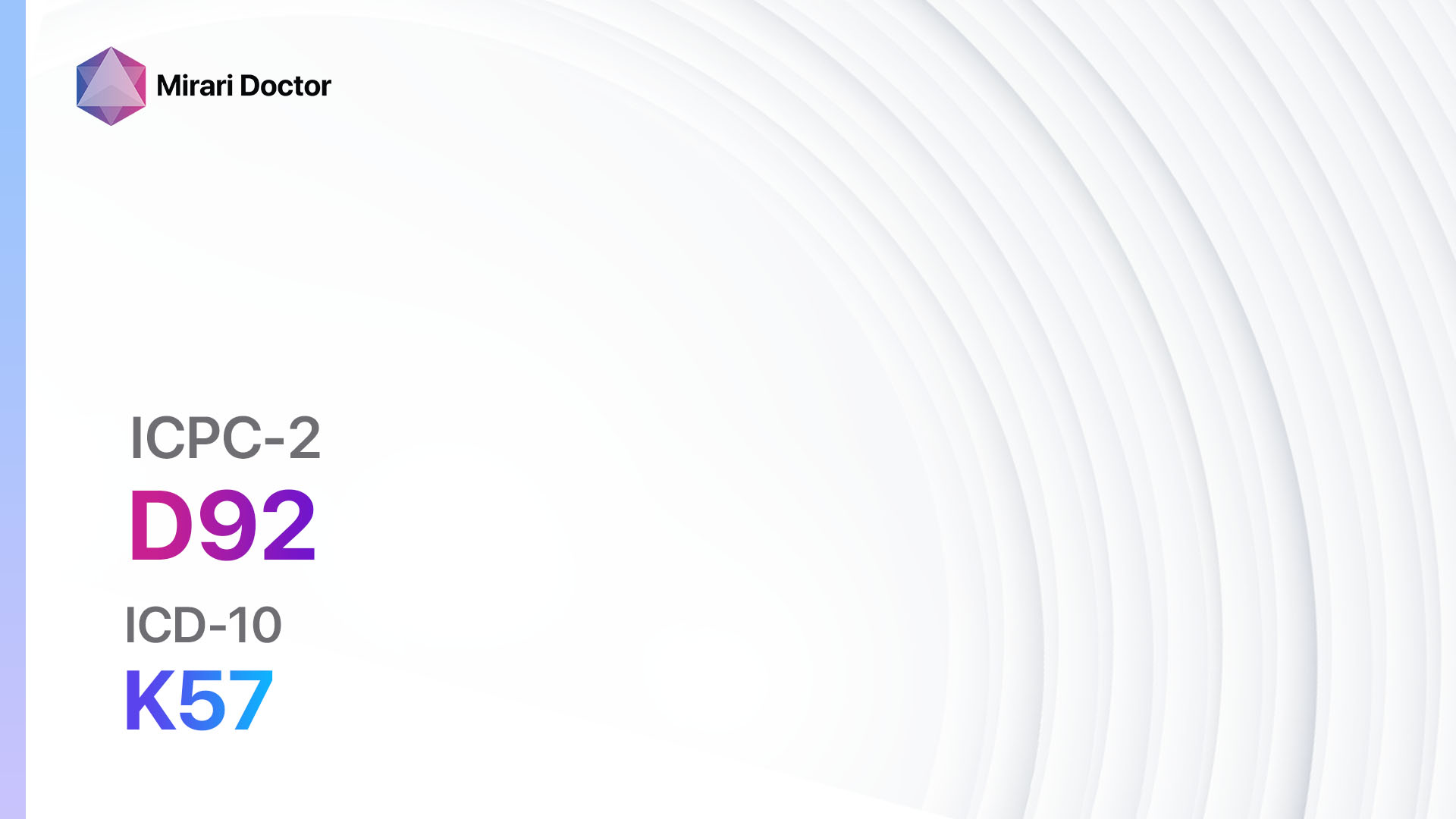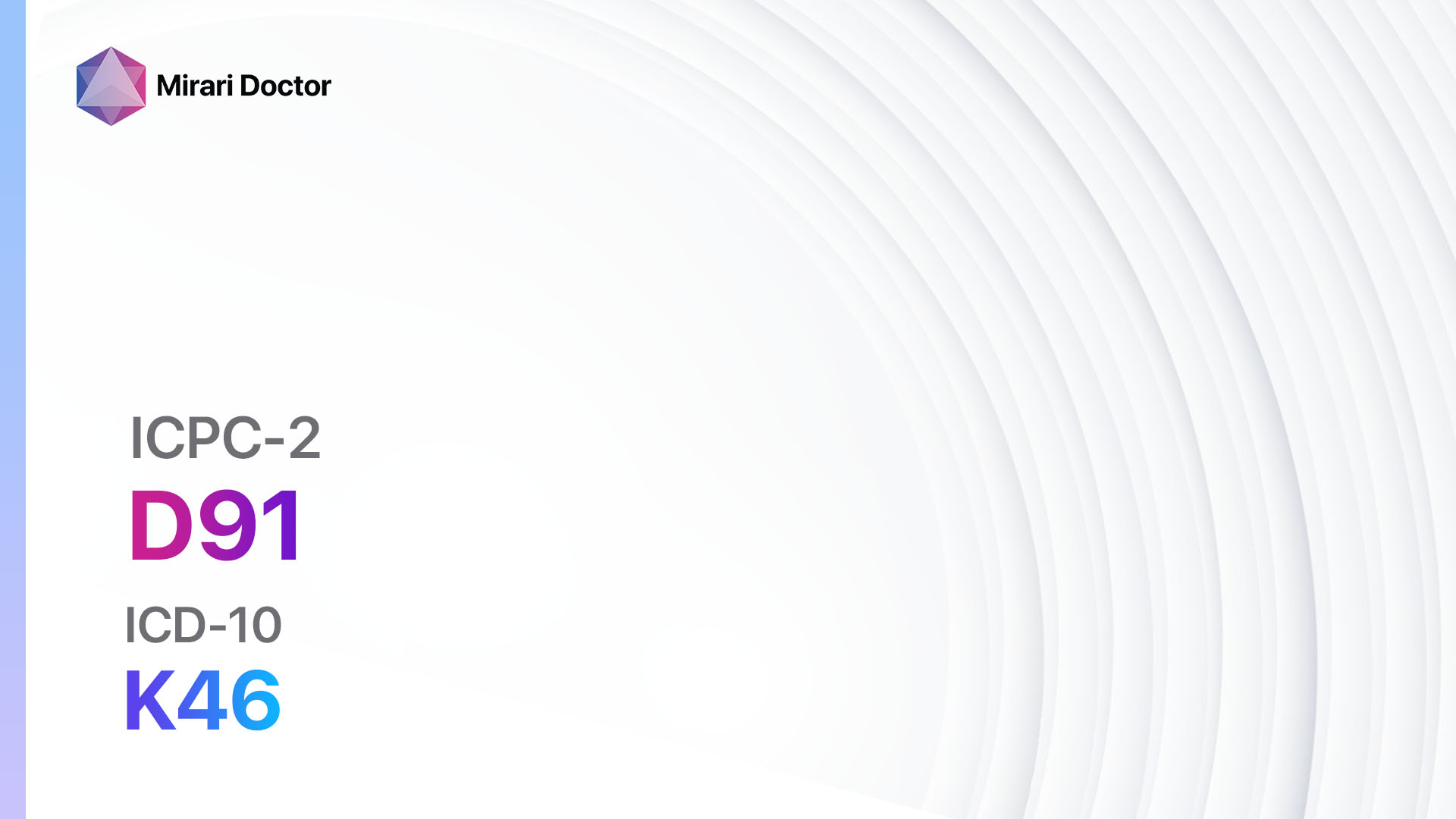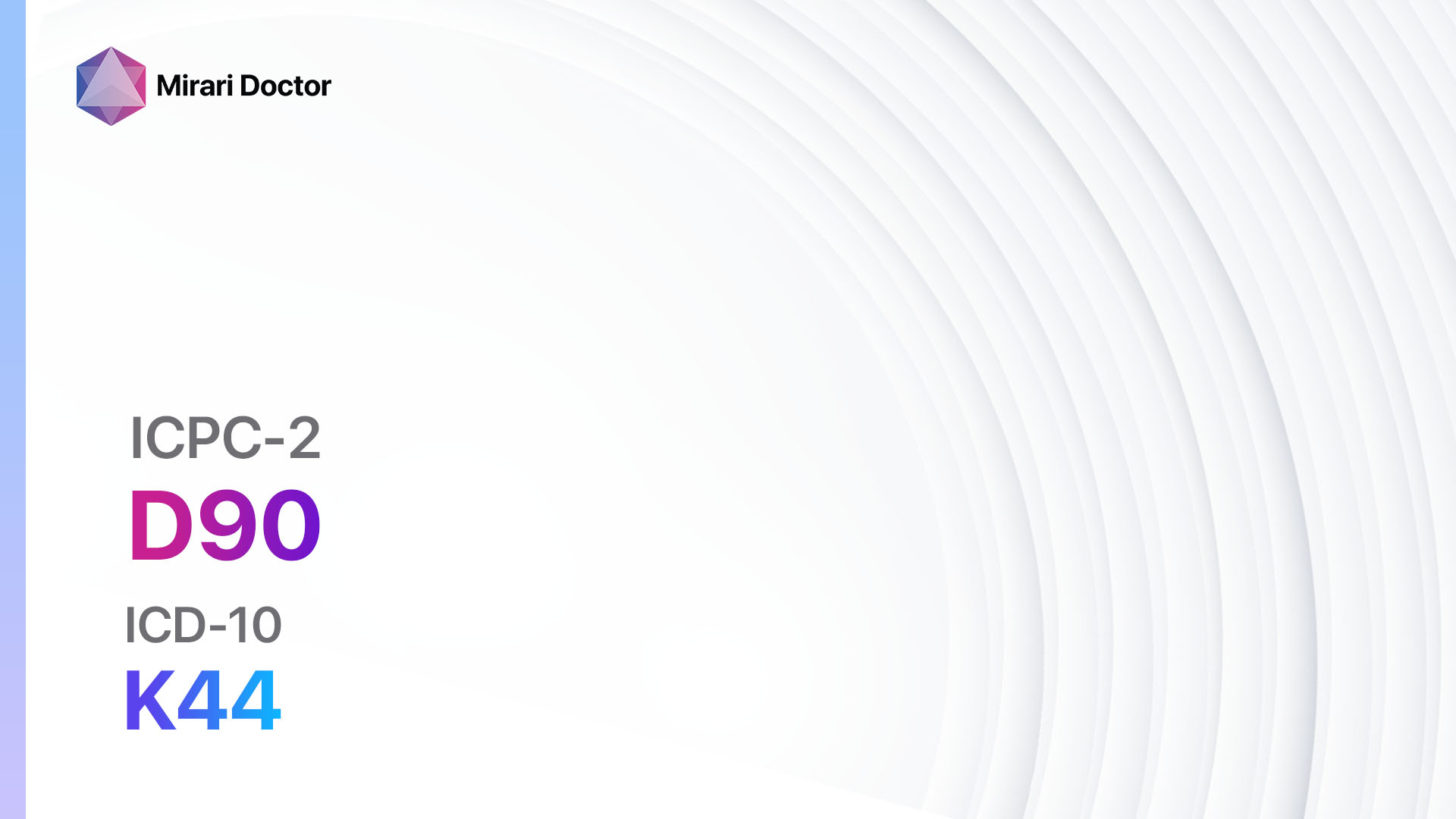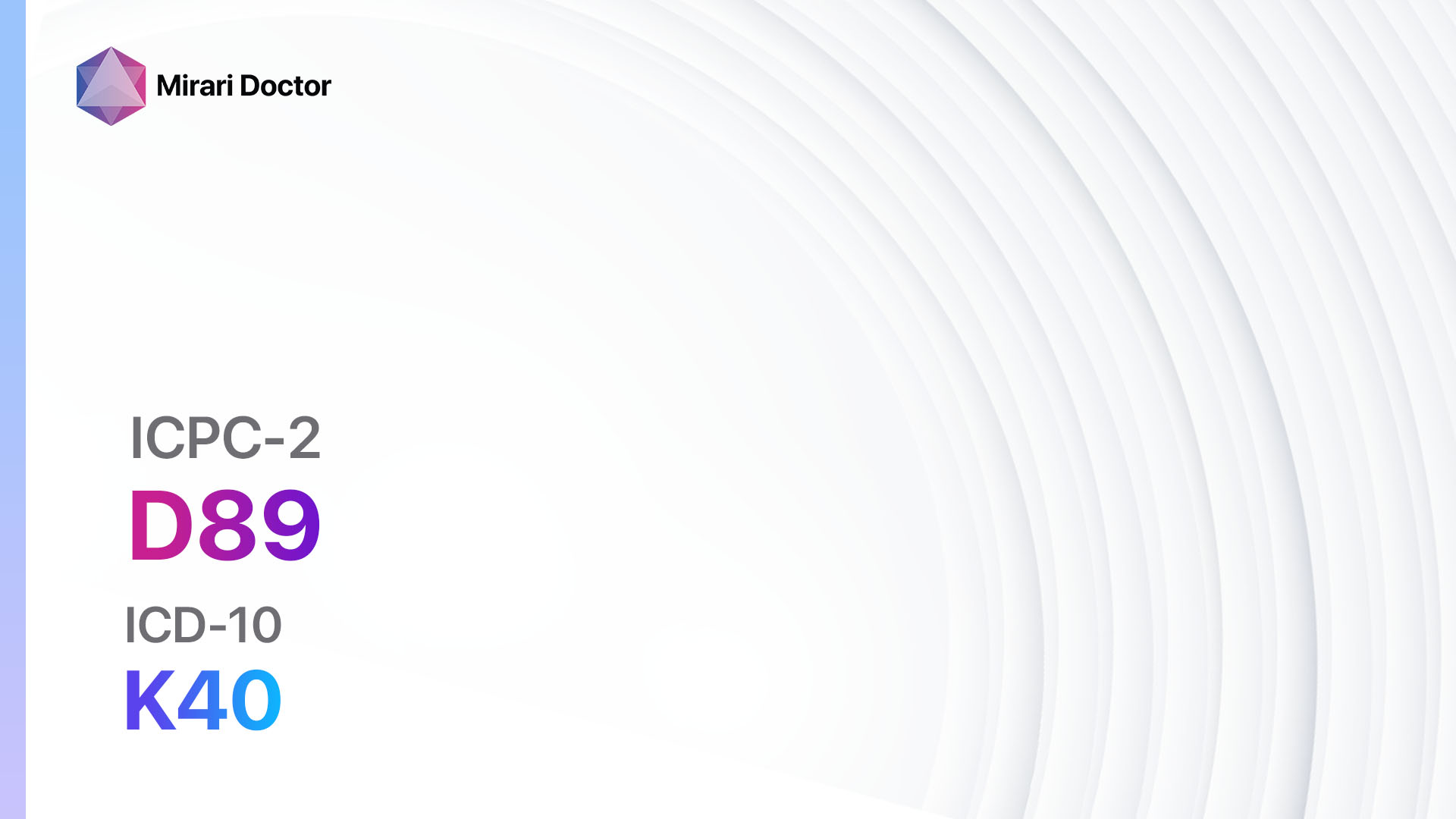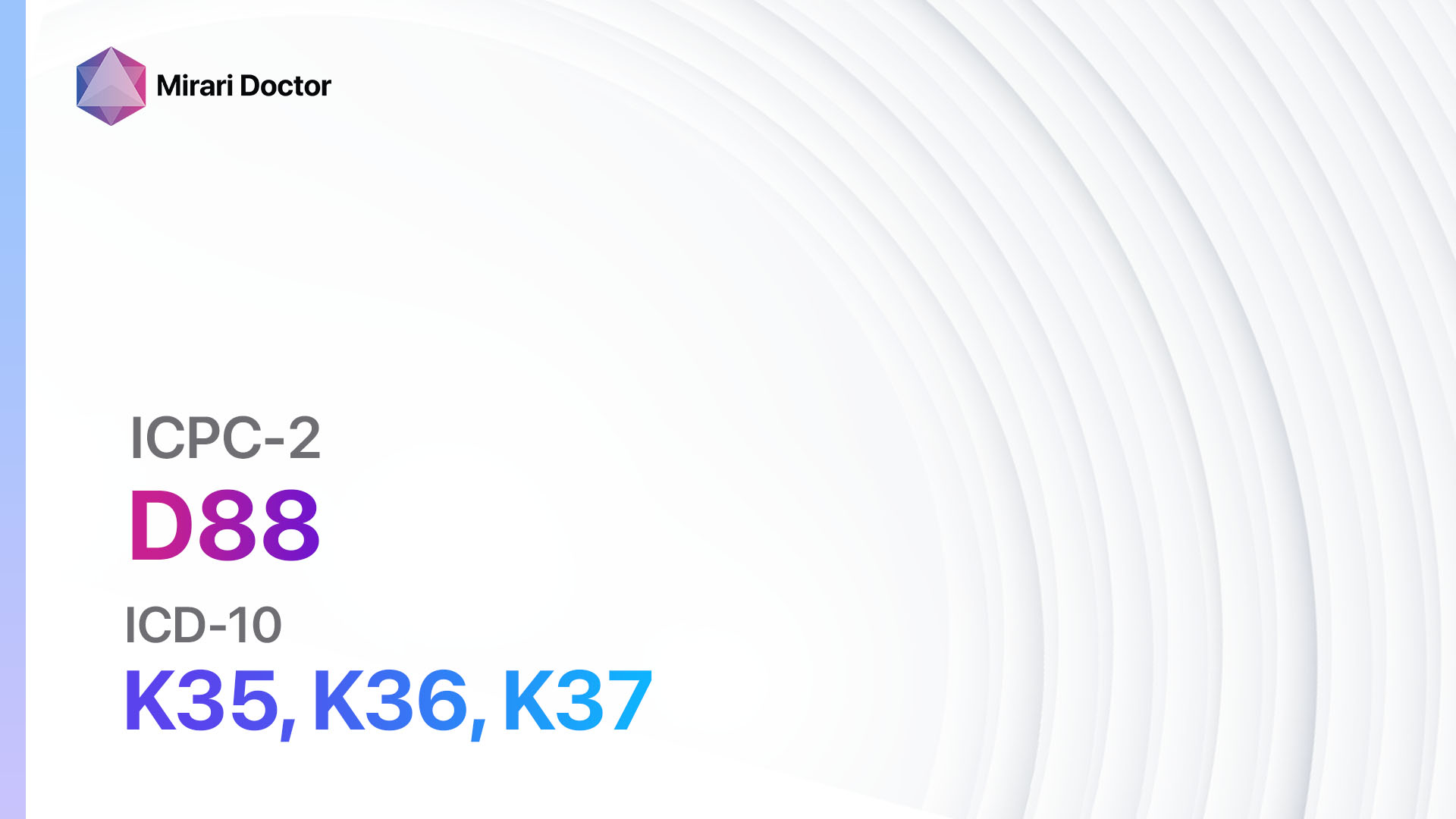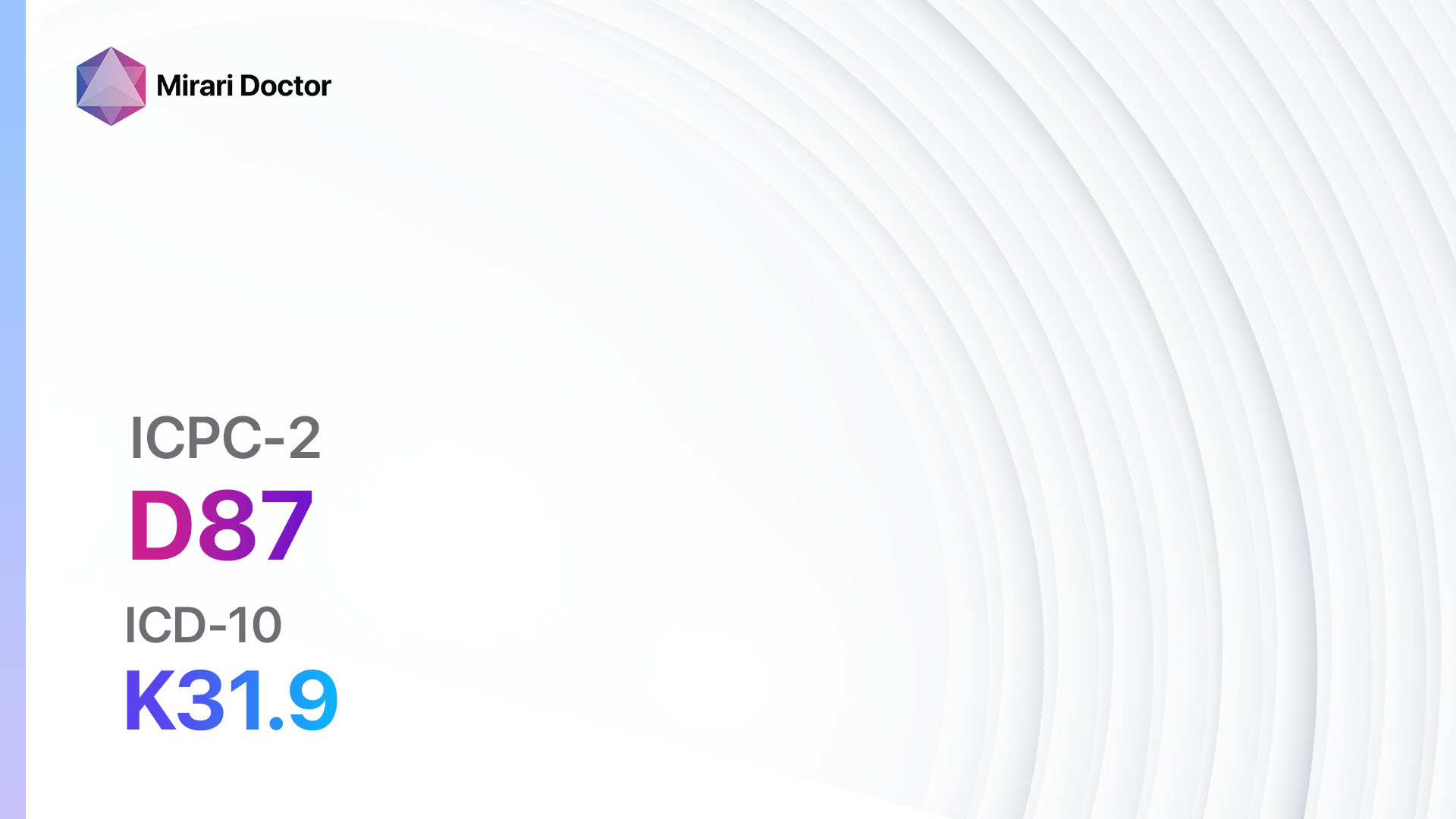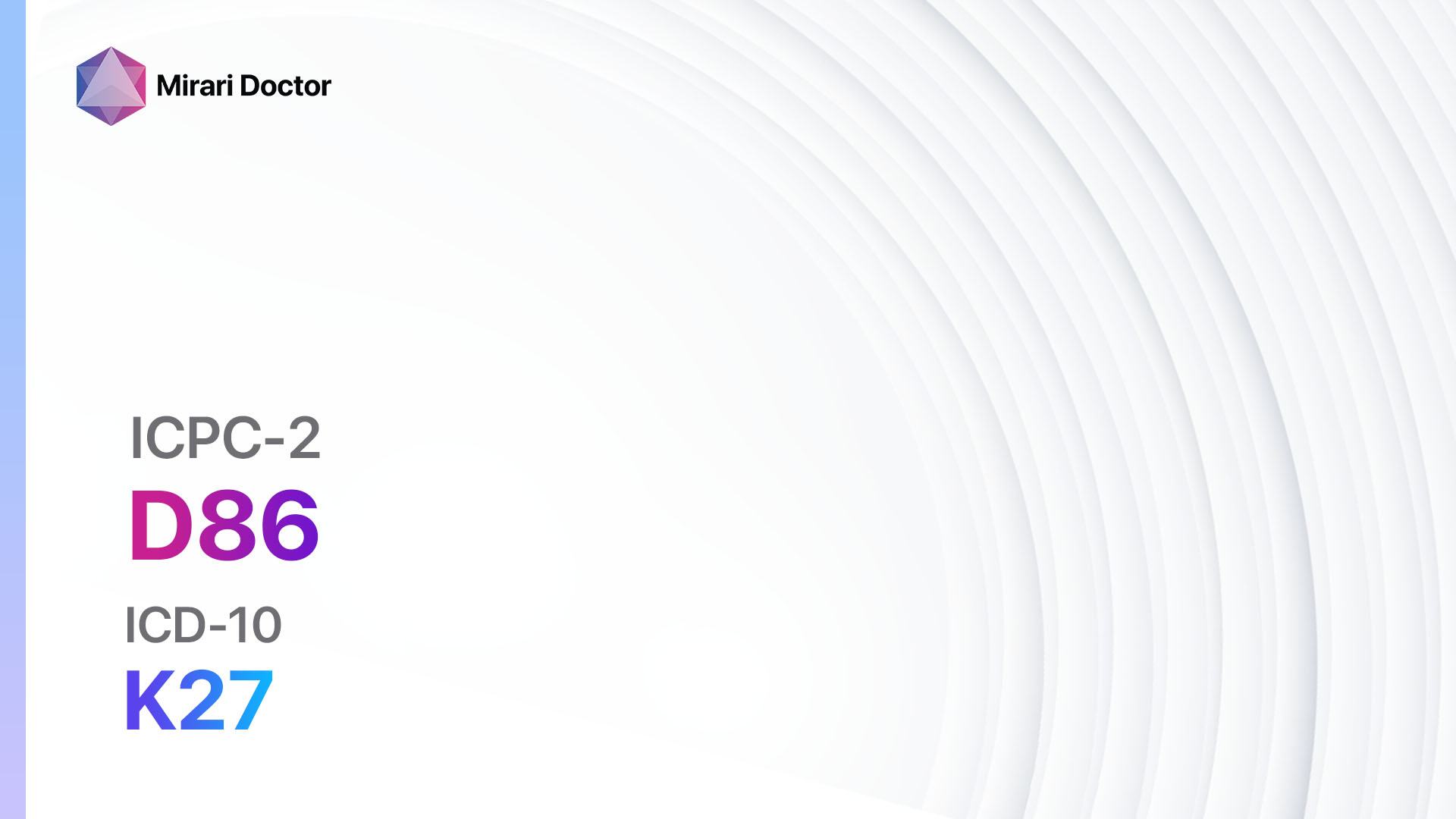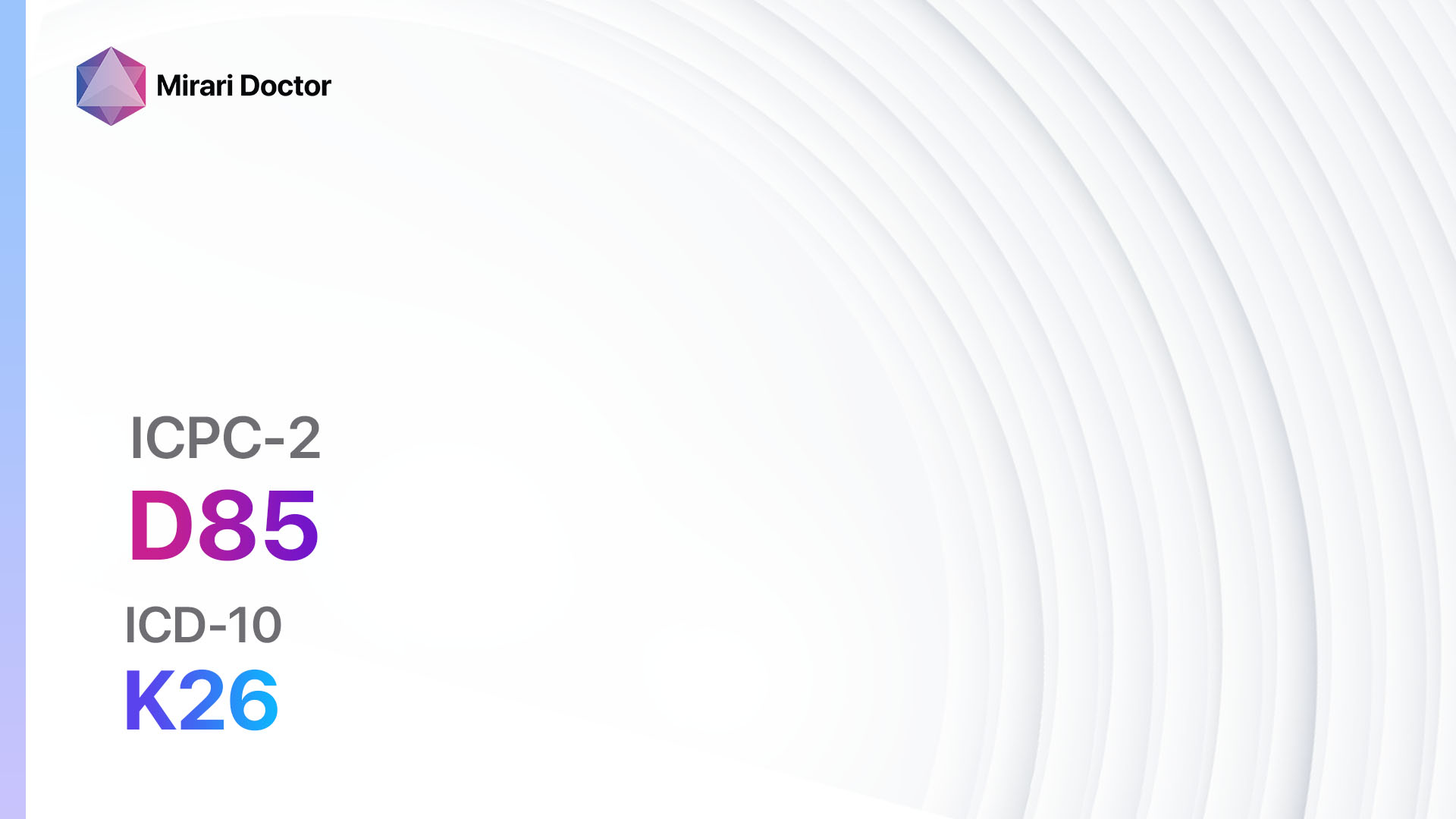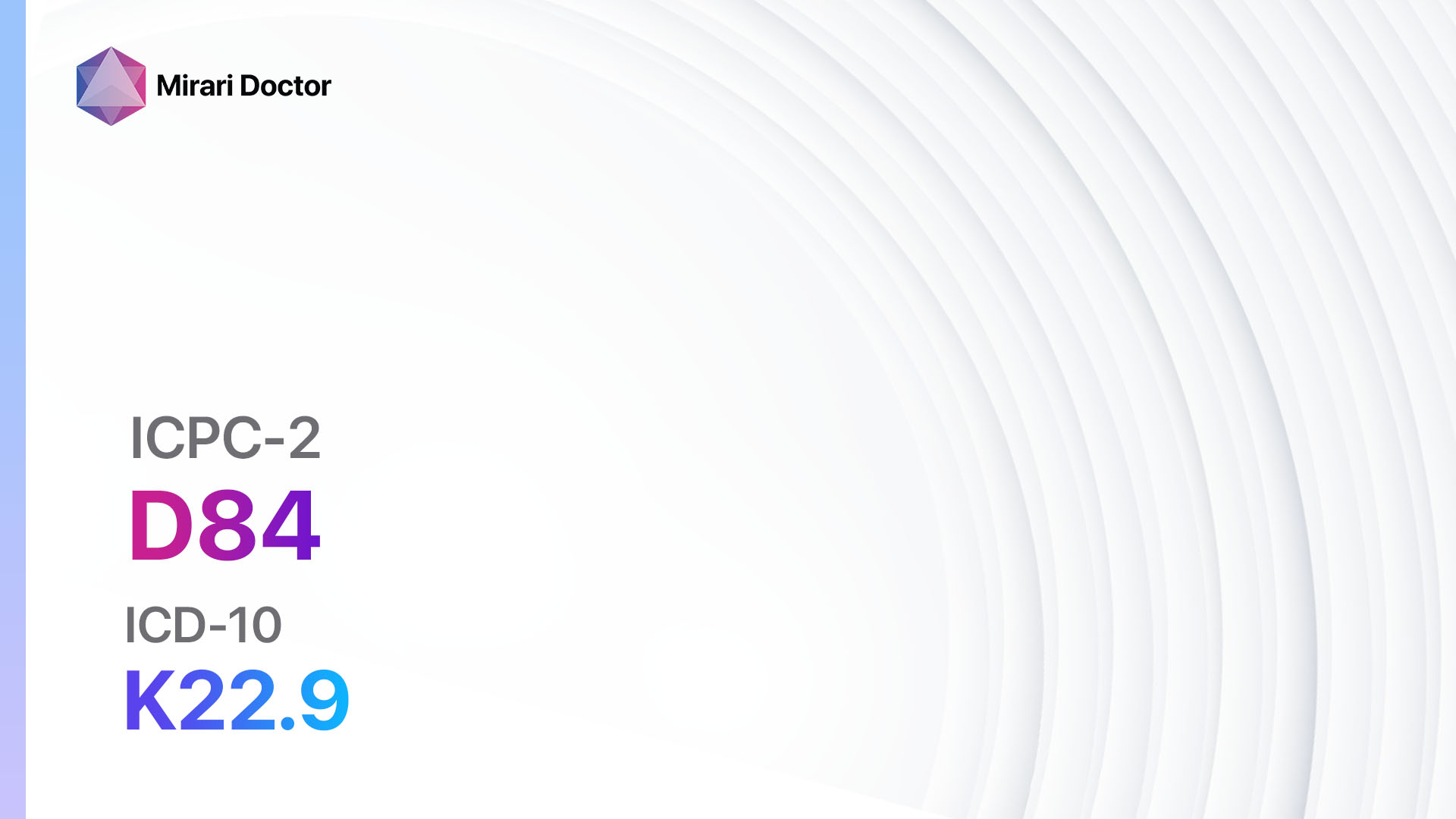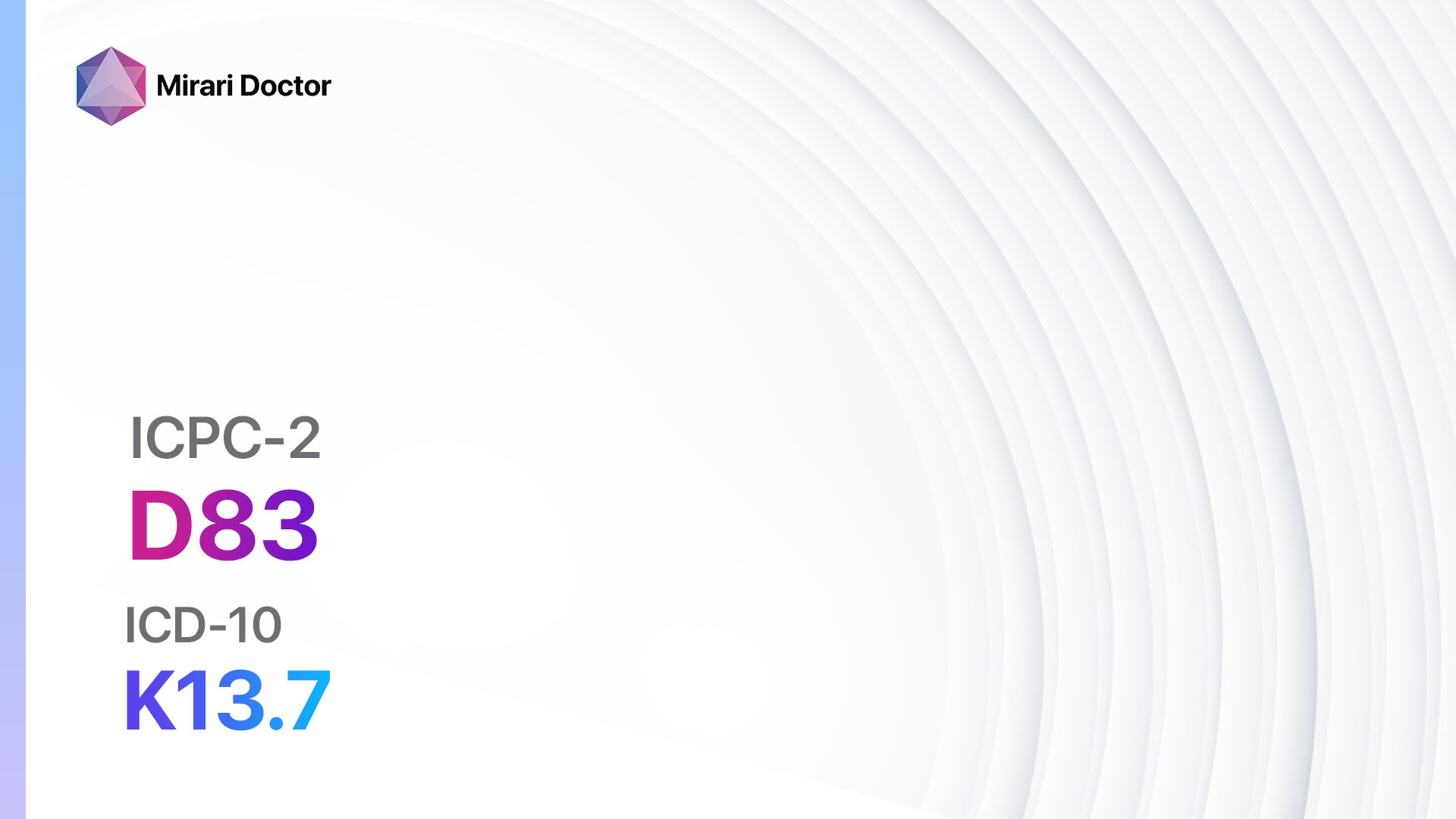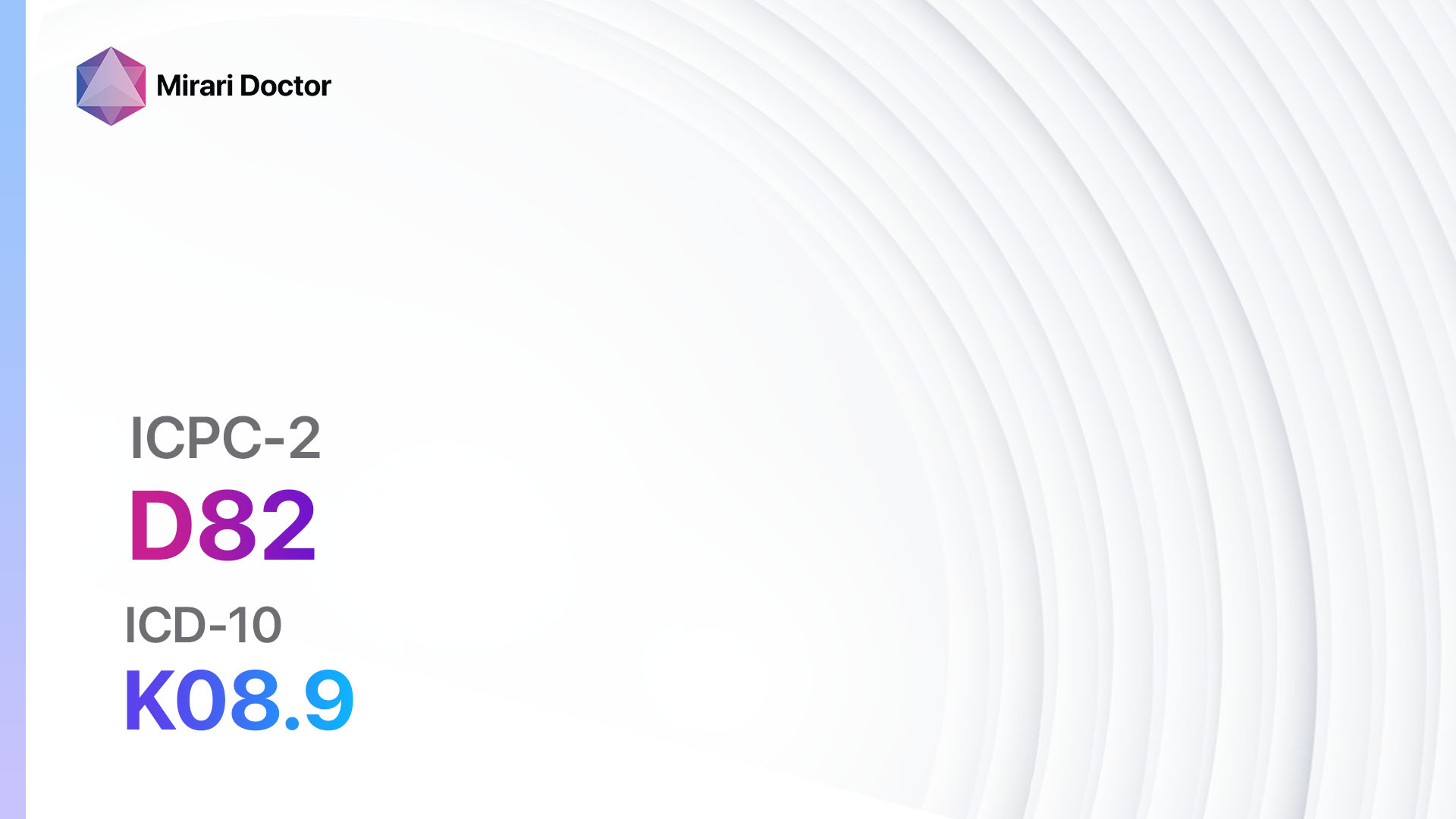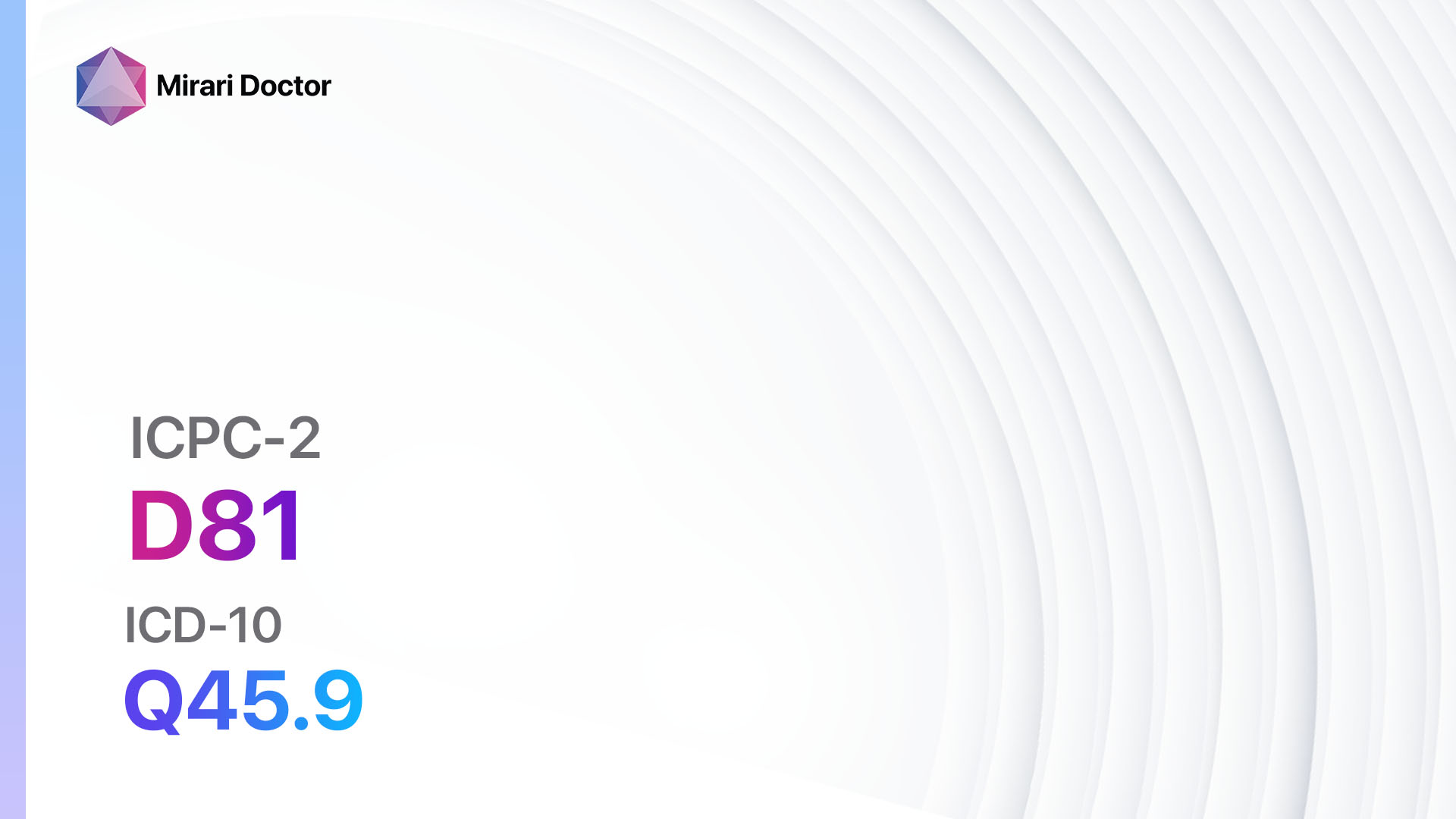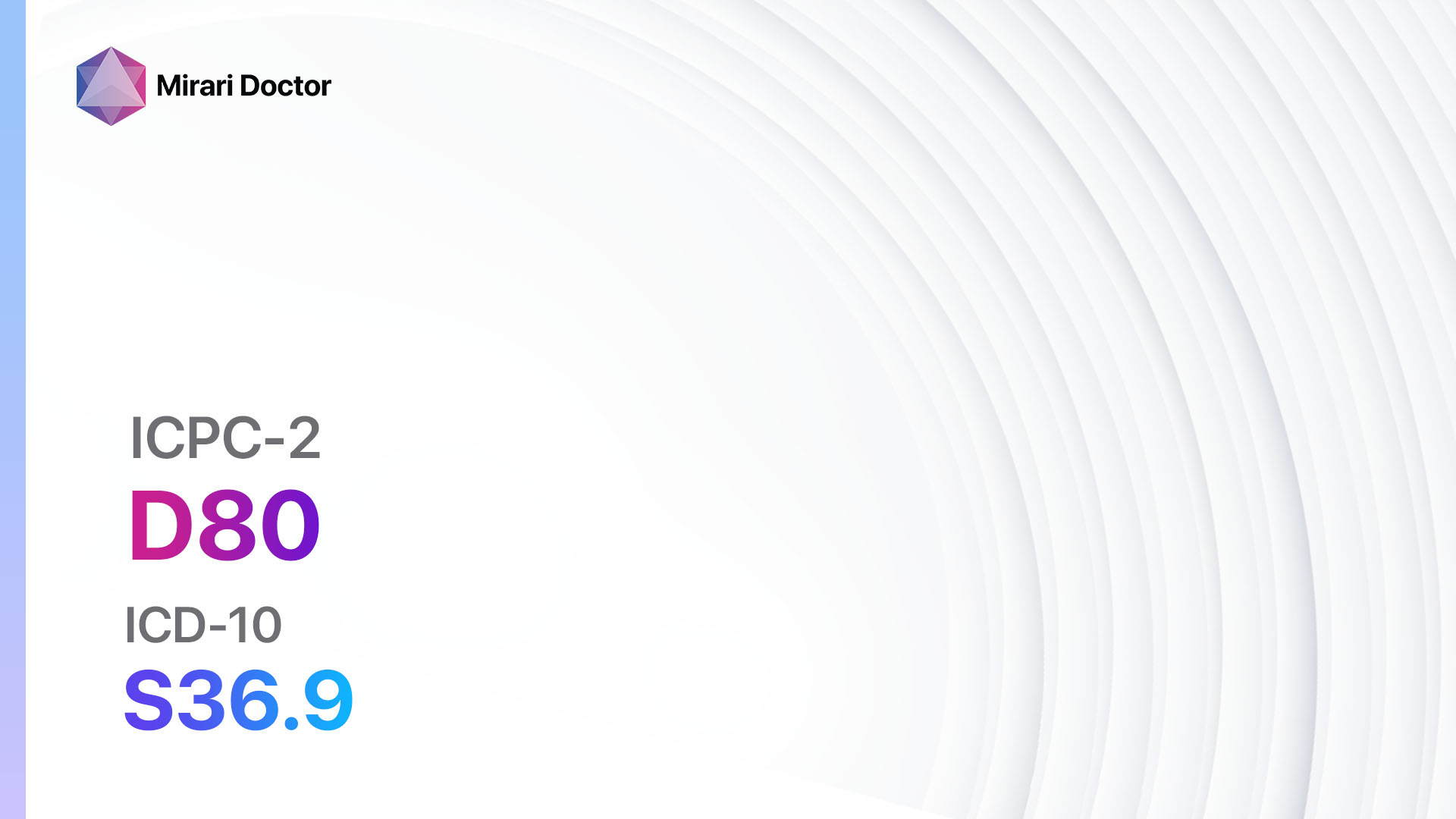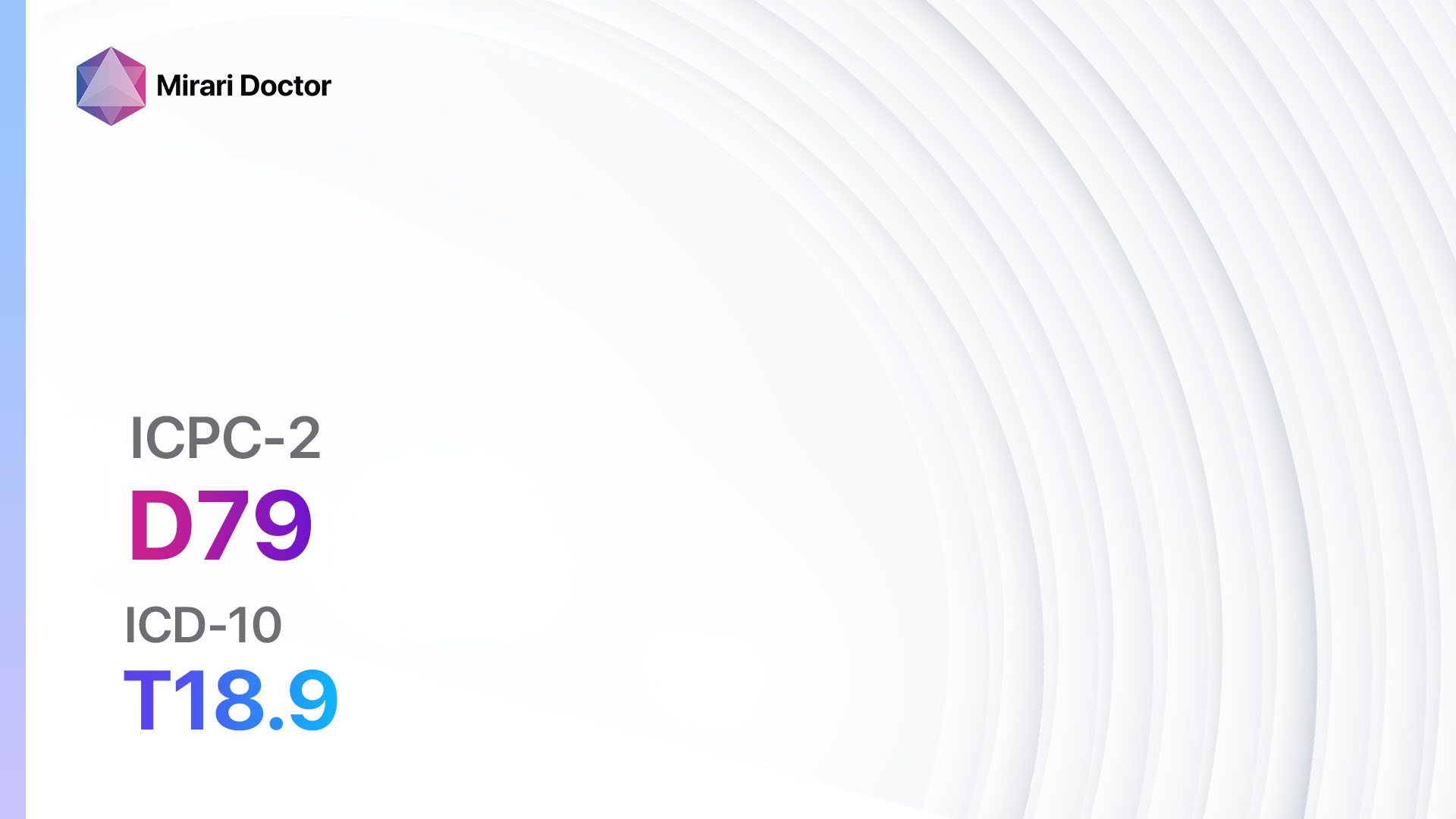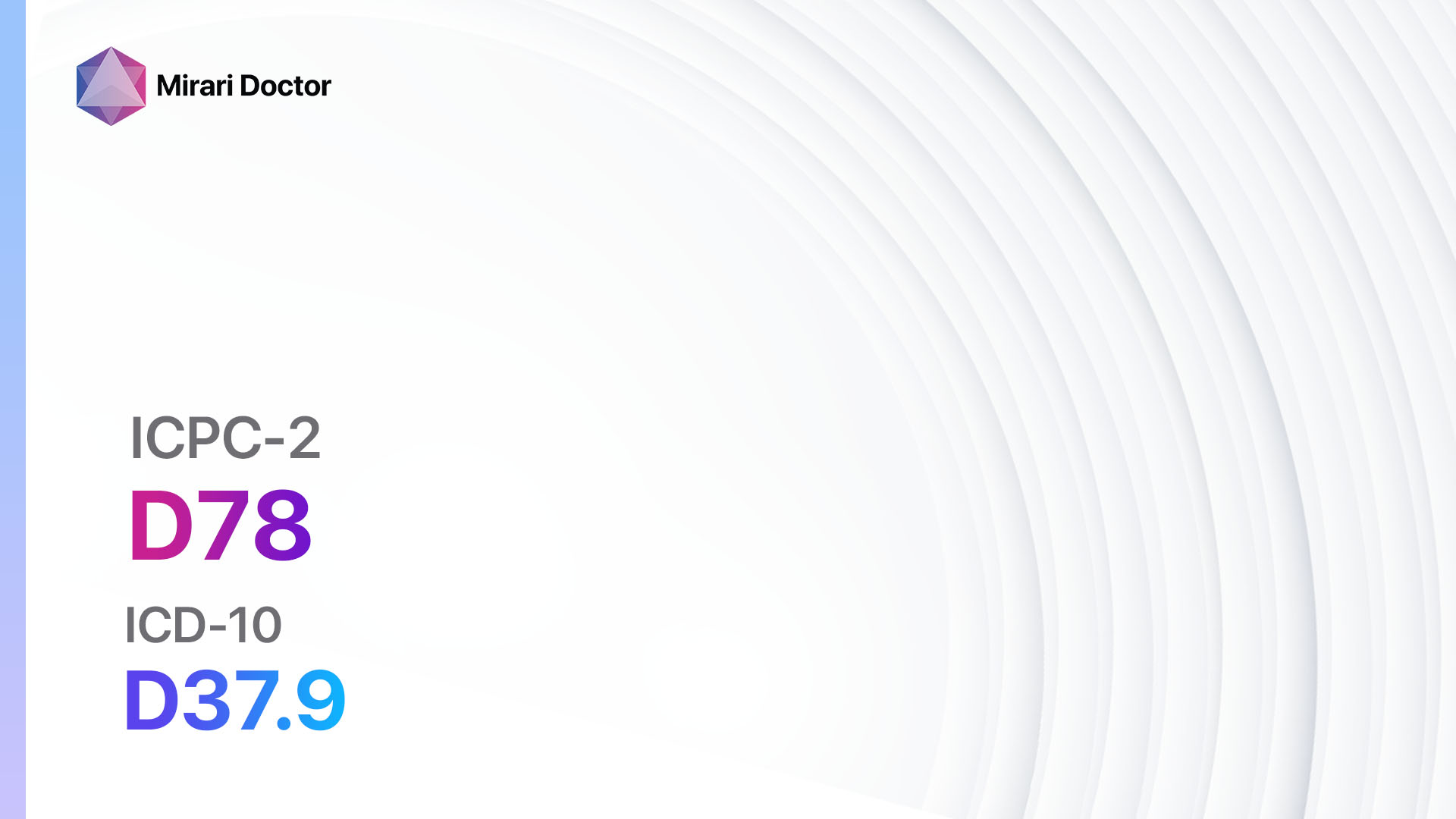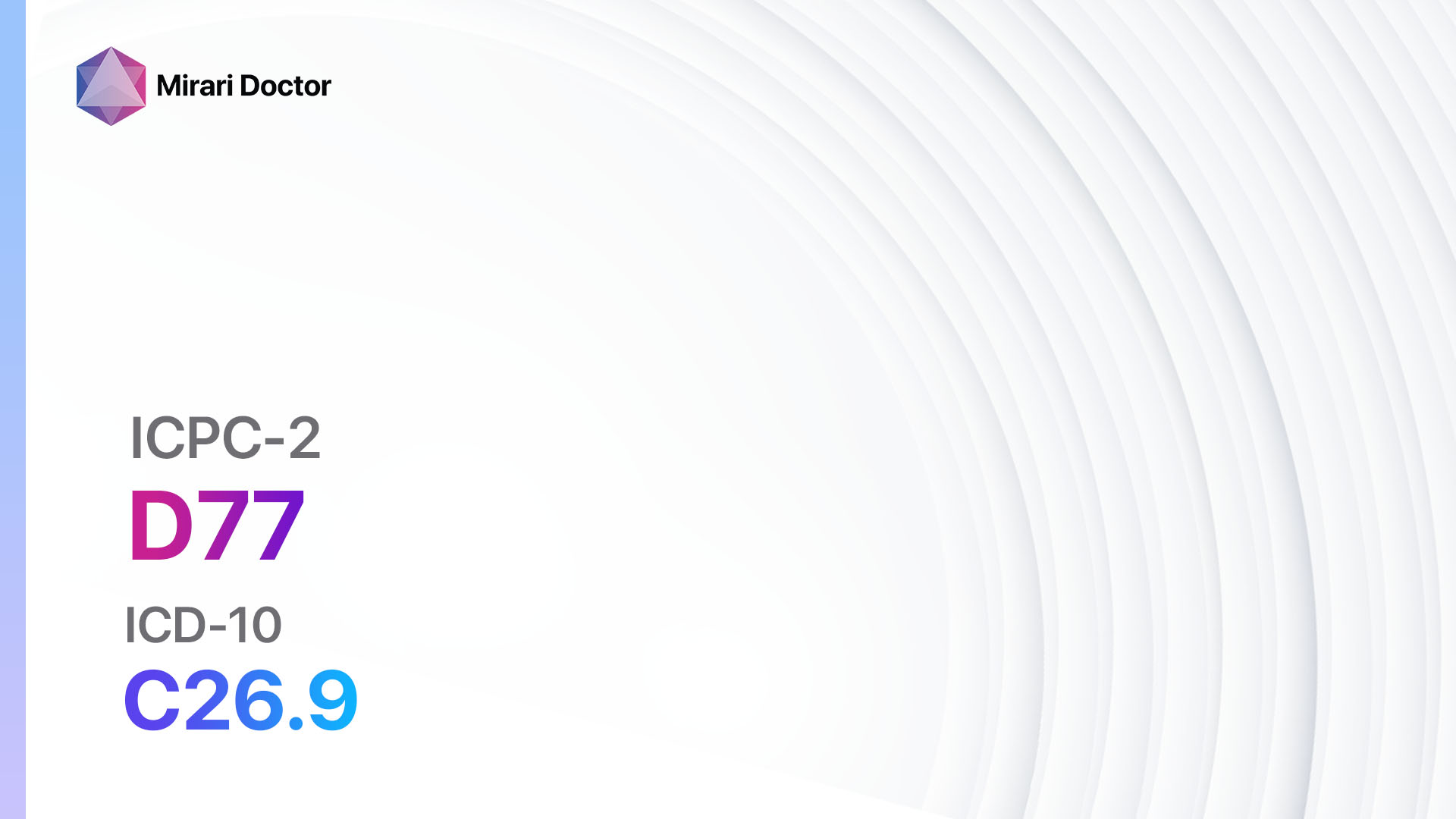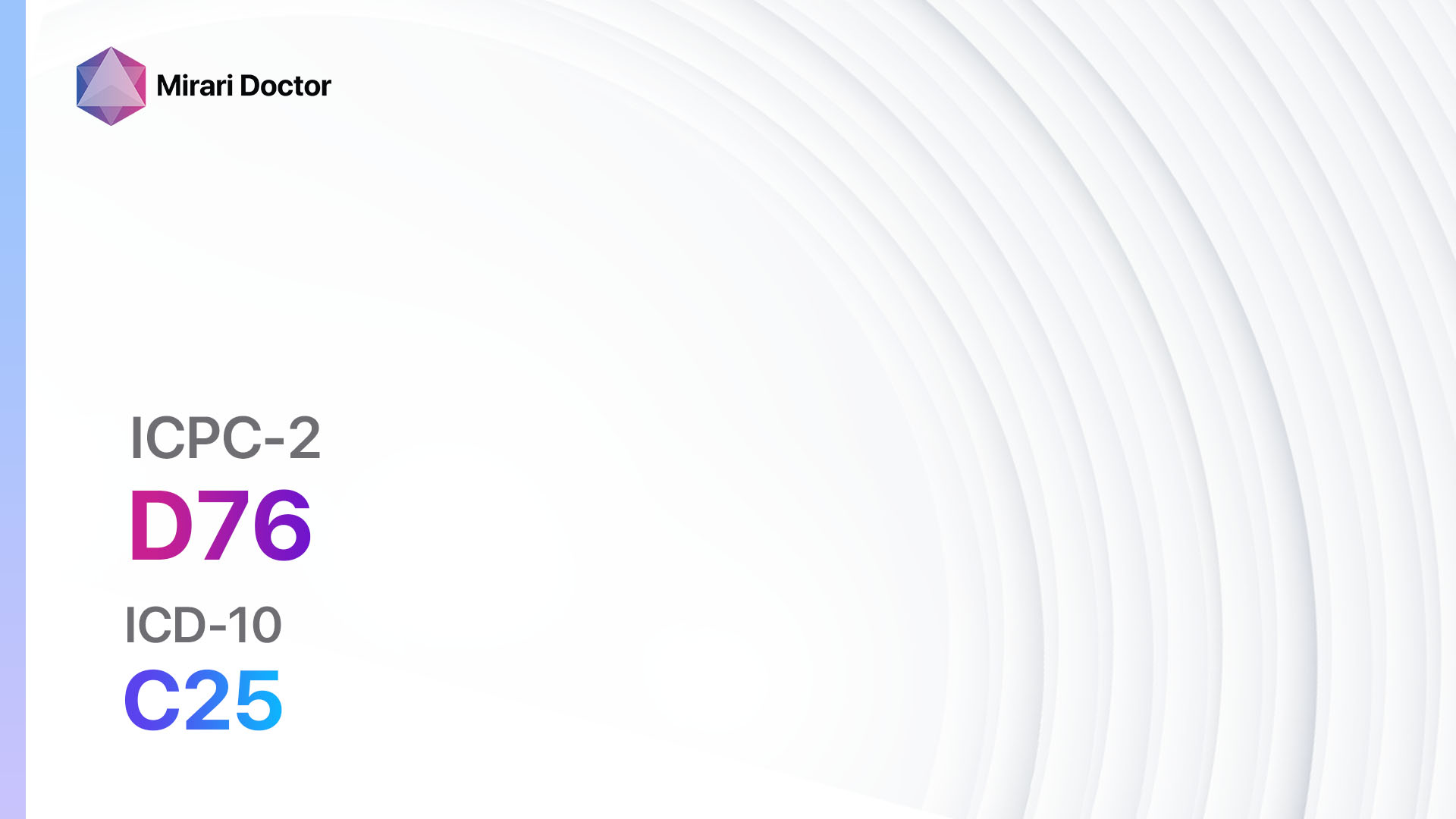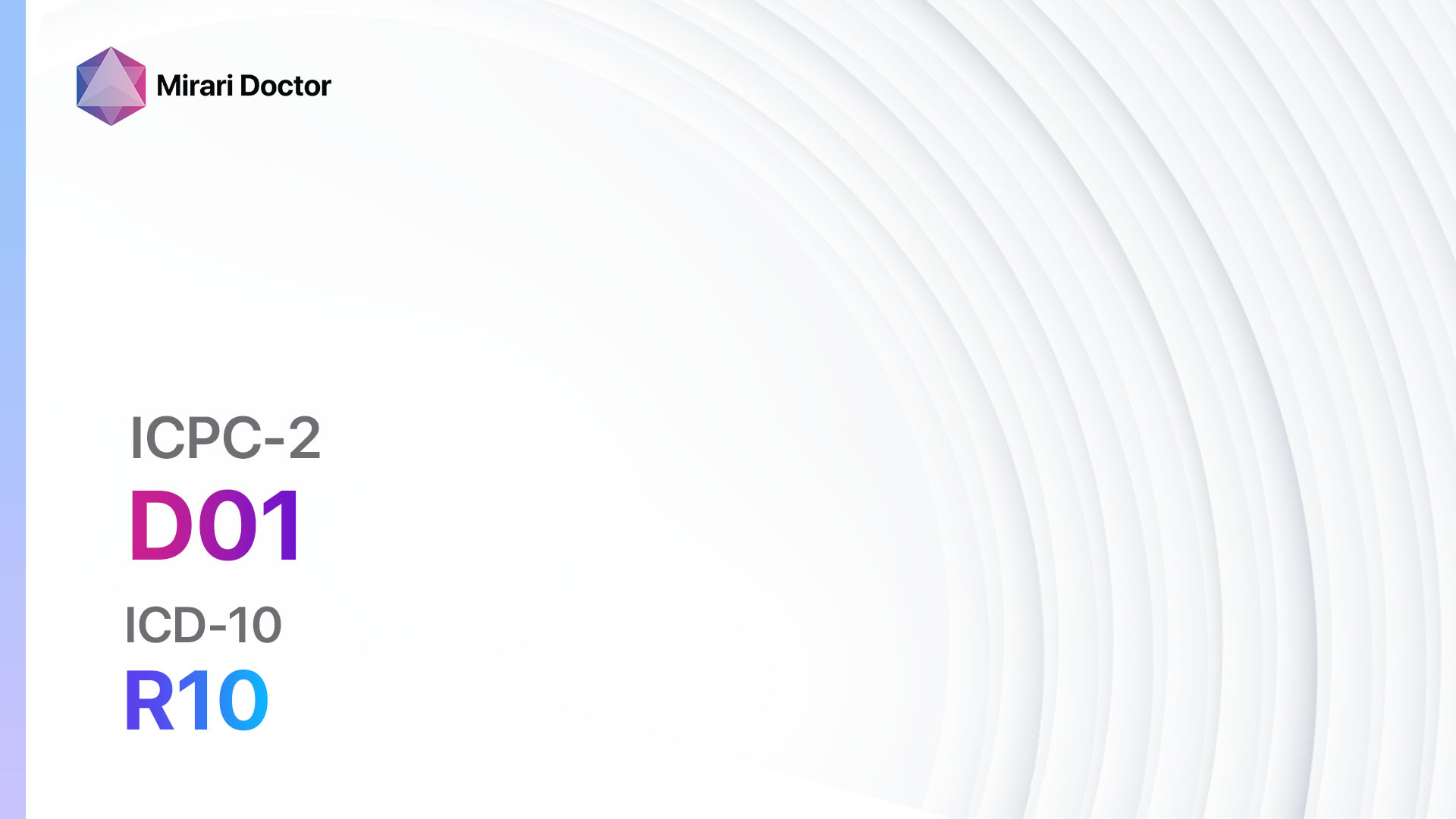
Introduction
Abdominal pain and cramps are common symptoms that can be caused by a variety of conditions. This guide aims to provide an overview of the diagnostic steps, possible interventions, and lifestyle interventions for abdominal pain/cramps general.[1][2]
Codes
Symptoms
- Abdominal pain: A sensation of discomfort or distress in the abdominal region.
- Abdominal cramps: Painful contractions of the abdominal muscles.[5]
Causes
- Gastrointestinal disorders: Such as irritable bowel syndrome (IBS), gastroenteritis, peptic ulcers, and inflammatory bowel disease (IBD).
- Gynecological conditions: Such as menstrual cramps, endometriosis, ovarian cysts, and pelvic inflammatory disease (PID).
- Urinary tract disorders: Such as urinary tract infections (UTIs), kidney stones, and bladder infections.
- Musculoskeletal conditions: Such as muscle strains, hernias, and abdominal wall pain.
- Other causes: Such as appendicitis, gallstones, pancreatitis, and certain cancers.[6]
Diagnostic Steps
Medical History
- Gather information about the patient’s symptoms, including the location, duration, and severity of the abdominal pain/cramps.
- Ask about any associated symptoms, such as changes in bowel movements, urinary symptoms, or menstrual irregularities.
- Inquire about any previous medical conditions, surgeries, or family history of gastrointestinal or gynecological disorders.
- Assess for any risk factors, such as recent travel, exposure to contaminated food or water, or use of certain medications.[7]
Physical Examination
- Perform a thorough physical examination, including inspection, palpation, percussion, and auscultation of the abdomen.
- Look for any signs of tenderness, distension, masses, or abnormal bowel sounds.
- Check for any signs of gynecological abnormalities, such as pelvic tenderness or masses.
- Evaluate for any signs of musculoskeletal abnormalities, such as muscle spasms or hernias.[8]
Laboratory Tests
- Complete blood count (CBC): To assess for signs of infection or inflammation.
- Urinalysis: To check for signs of urinary tract infection or kidney stones.
- Stool analysis: To evaluate for signs of infection, inflammation, or malabsorption.
- Liver function tests: To assess liver function and rule out liver-related causes of abdominal pain.
- Amylase and lipase levels: To evaluate for pancreatitis.
- Pregnancy test: To rule out pregnancy as a cause of abdominal pain in women of childbearing age.[9]
Diagnostic Imaging
- Abdominal X-ray: To assess for signs of bowel obstruction, perforation, or presence of kidney stones.
- Abdominal ultrasound: To visualize the abdominal organs and assess for any abnormalities.
- CT scan: To obtain detailed images of the abdomen and identify any structural abnormalities or masses.
- MRI: To provide detailed images of the abdominal organs and assess for any abnormalities.[10]
Other Tests
- Endoscopy: A procedure that uses a flexible tube with a camera to visualize the upper gastrointestinal tract and obtain biopsies if necessary.
- Colonoscopy: A procedure that uses a flexible tube with a camera to visualize the colon and rectum and obtain biopsies if necessary.
- Pelvic ultrasound: To assess the pelvic organs in women and evaluate for any gynecological abnormalities.
- Laparoscopy: A minimally invasive surgical procedure that allows direct visualization of the abdominal organs and can be used for diagnostic purposes.
Follow-up and Patient Education
- Schedule a follow-up appointment to review the results of diagnostic tests and discuss further management options.
- Provide patient education on the potential causes of abdominal pain/cramps and the importance of adhering to any prescribed treatments or lifestyle modifications.
- Encourage the patient to seek medical attention if symptoms worsen or new symptoms develop.
Possible Interventions
Traditional Interventions
Medications:
Top 5 drugs for Abdominal pain/cramps general:
- Antispasmodics (e.g., Dicyclomine, Hyoscyamine):
- Cost: Generic versions can be $10-$50/month.
- Contraindications: Glaucoma, urinary retention, myasthenia gravis.
- Side effects: Dry mouth, blurred vision, constipation.
- Severe side effects: Paralytic ileus, toxic megacolon.
- Drug interactions: Other anticholinergic medications.
- Warning: May cause drowsiness or dizziness.
- Proton pump inhibitors (e.g., Omeprazole, Pantoprazole):
- Cost: Generic versions can be $10-$50/month.
- Contraindications: Hypersensitivity to proton pump inhibitors.
- Side effects: Headache, diarrhea, abdominal pain.
- Severe side effects: Clostridium difficile infection, vitamin B12 deficiency.
- Drug interactions: Clopidogrel, certain antifungal medications.
- Warning: Long-term use may increase the risk of fractures.
- Antacids (e.g., Calcium carbonate, Aluminum hydroxide):
- Cost: Over-the-counter versions are inexpensive.
- Contraindications: Hypercalcemia, renal impairment.
- Side effects: Constipation, diarrhea.
- Severe side effects: Hypophosphatemia, hypermagnesemia.
- Drug interactions: Certain antibiotics, iron supplements.
- Warning: May interfere with the absorption of other medications.
- Antibiotics (e.g., Ciprofloxacin, Metronidazole):
- Cost: Generic versions can be $10-$50/month.
- Contraindications: Hypersensitivity to antibiotics.
- Side effects: Nausea, diarrhea, abdominal pain.
- Severe side effects: Tendon rupture, Clostridium difficile infection.
- Drug interactions: Warfarin, certain antacids.
- Warning: Should be used judiciously to prevent antibiotic resistance.
- Analgesics (e.g., Acetaminophen, Ibuprofen):
- Cost: Over-the-counter versions are inexpensive.
- Contraindications: Hypersensitivity to analgesics, active gastrointestinal bleeding.
- Side effects: Nausea, stomach upset, dizziness.
- Severe side effects: Gastrointestinal bleeding, liver damage.
- Drug interactions: Other nonsteroidal anti-inflammatory drugs (NSAIDs), anticoagulants.
- Warning: Prolonged use may increase the risk of cardiovascular events.
Alternative Drugs:
- Antidepressants (e.g., Amitriptyline, Duloxetine): May be used for the management of chronic abdominal pain.
- Antibiotics (e.g., Rifaximin): Used for the treatment of small intestinal bacterial overgrowth (SIBO).
- Antifungal medications (e.g., Fluconazole): Used for the treatment of fungal infections in the gastrointestinal tract.
- Probiotics: May help restore the balance of gut bacteria and alleviate symptoms of abdominal pain/cramps.
- Antidiarrheal medications (e.g., Loperamide): Used to control diarrhea associated with abdominal pain/cramps.
Surgical Procedures:
- Appendectomy: Surgical removal of the appendix in cases of appendicitis. Cost: $10,000 to $30,000.
- Cholecystectomy: Surgical removal of the gallbladder in cases of gallstones or gallbladder disease. Cost: $20,000 to $40,000.
- Hernia repair: Surgical repair of a hernia that is causing abdominal pain. Cost: $10,000 to $20,000.
- Oophorectomy: Surgical removal of the ovaries in cases of ovarian cysts or other gynecological conditions. Cost: $15,000 to $30,000.
- Hysterectomy: Surgical removal of the uterus in cases of gynecological conditions causing abdominal pain. Cost: $20,000 to $40,000.
Alternative Interventions
- Acupuncture: May help alleviate abdominal pain/cramps by stimulating specific points on the body. Cost: $60-$120 per session.
- Herbal remedies: Certain herbs, such as peppermint, ginger, and chamomile, may have anti-inflammatory and antispasmodic properties. Cost: Varies depending on the specific herb and preparation.
- Mind-body techniques: Practices such as yoga, meditation, and deep breathing exercises may help reduce stress and alleviate abdominal pain/cramps. Cost: Varies depending on the specific practice and location.
- Dietary modifications: Avoiding trigger foods, such as spicy or fatty foods, and following a low FODMAP diet may help reduce abdominal pain/cramps. Cost: Varies depending on individual food choices and dietary restrictions.
- Heat therapy: Applying a heating pad or warm compress to the abdomen may help relax the muscles and alleviate pain. Cost: Varies depending on the type of heat therapy device used.
Lifestyle Interventions
- Stress management: Engaging in stress-reducing activities, such as exercise, meditation, or hobbies, may help alleviate abdominal pain/cramps. Cost: Varies depending on the chosen activity.
- Regular exercise: Maintaining a regular exercise routine can help improve digestion and reduce abdominal pain/cramps. Cost: Varies depending on the chosen exercise program or gym membership.
- Adequate hydration: Drinking enough water throughout the day can help prevent dehydration and promote healthy digestion. Cost: Varies depending on the cost of water or other hydrating beverages.
- Healthy diet: Consuming a balanced diet rich in fruits, vegetables, whole grains, and lean proteins can help promote healthy digestion and reduce abdominal pain/cramps. Cost: Varies depending on individual food choices and dietary restrictions.
- Avoiding triggers: Identifying and avoiding specific triggers, such as certain foods or activities, that worsen abdominal pain/cramps. Cost: Varies depending on individual triggers and lifestyle modifications required.
It is important to note that the cost ranges provided are approximate and may vary depending on the location and availability of the interventions.
Mirari Cold Plasma Alternative Intervention
Understanding Mirari Cold Plasma
- Safe and Non-Invasive Treatment: Mirari Cold Plasma is a safe and non-invasive treatment option for various skin conditions. It does not require incisions, minimizing the risk of scarring, bleeding, or tissue damage.
- Efficient Extraction of Foreign Bodies: Mirari Cold Plasma facilitates the removal of foreign bodies from the skin by degrading and dissociating organic matter, allowing easier access and extraction.
- Pain Reduction and Comfort: Mirari Cold Plasma has a local analgesic effect, providing pain relief during the treatment, making it more comfortable for the patient.
- Reduced Risk of Infection: Mirari Cold Plasma has antimicrobial properties, effectively killing bacteria and reducing the risk of infection.
- Accelerated Healing and Minimal Scarring: Mirari Cold Plasma stimulates wound healing and tissue regeneration, reducing healing time and minimizing the formation of scars.
Mirari Cold Plasma Prescription
Video instructions for using Mirari Cold Plasma Device – D01 Abdominal pain/cramps general (ICD-10:R10)
| Mild | Moderate | Severe |
| Mode setting: 1 (Infection) Location: 0 (Localized) Morning: 15 minutes, Evening: 15 minutes |
Mode setting: 1 (Infection) Location: 0 (Localized) Morning: 30 minutes, Lunch: 30 minutes, Evening: 30 minutes |
Mode setting: 1 (Infection) Location: 0 (Localized) Morning: 30 minutes, Lunch: 30 minutes, Evening: 30 minutes |
| Mode setting: 2 (Wound Healing) Location: 3 (Kidney, Liver & Spleen) Morning: 15 minutes, Evening: 15 minutes |
Mode setting: 2 (Wound Healing) Location: 3 (Kidney, Liver & Spleen) Morning: 30 minutes, Lunch: 30 minutes, Evening: 30 minutes |
Mode setting: 2 (Wound Healing) Location: 3 (Kidney, Liver & Spleen) Morning: 30 minutes, Lunch: 30 minutes, Evening: 30 minutes |
| Mode setting: 7 (Immunotherapy) Location: 1 (Sacrum) Morning: 15 minutes, Evening: 15 minutes |
Mode setting: 7 (Immunotherapy) Location: 1 (Sacrum) Morning: 30 minutes, Lunch: 30 minutes, Evening: 30 minutes |
Mode setting: 7 (Immunotherapy) Location: 1 (Sacrum) Morning: 30 minutes, Lunch: 30 minutes, Evening: 30 minutes |
| Total Morning: 45 minutes approx. $7.50 USD, Evening: 45 minutes approx. $7.50 USD |
Total Morning: 90 minutes approx. $15 USD, Lunch: 90 minutes approx. $15 USD, Evening: 90 minutes approx. $15 USD, |
Total Morning: 90 minutes approx. $15 USD, Lunch: 90 minutes approx. $15 USD, Evening: 90 minutes approx. $15 USD, |
| Usual treatment for 7-60 days approx. $105 USD – $900 USD | Usual treatment for 6-8 weeks approx. $1,890 USD – $2,520 USD |
Usual treatment for 3-6 months approx. $4,050 USD – $8,100 USD
|
 |
|
Use the Mirari Cold Plasma device to treat Abdominal pain/cramps general effectively.
WARNING: MIRARI COLD PLASMA IS DESIGNED FOR THE HUMAN BODY WITHOUT ANY ARTIFICIAL OR THIRD PARTY PRODUCTS. USE OF OTHER PRODUCTS IN COMBINATION WITH MIRARI COLD PLASMA MAY CAUSE UNPREDICTABLE EFFECTS, HARM OR INJURY. PLEASE CONSULT A MEDICAL PROFESSIONAL BEFORE COMBINING ANY OTHER PRODUCTS WITH USE OF MIRARI.
Step 1: Cleanse the Skin
- Start by cleaning the affected area of the skin with a gentle cleanser or mild soap and water. Gently pat the area dry with a clean towel.
Step 2: Prepare the Mirari Cold Plasma device
- Ensure that the Mirari Cold Plasma device is fully charged or has fresh batteries as per the manufacturer’s instructions. Make sure the device is clean and in good working condition.
- Switch on the Mirari device using the power button or by following the specific instructions provided with the device.
- Some Mirari devices may have adjustable settings for intensity or treatment duration. Follow the manufacturer’s instructions to select the appropriate settings based on your needs and the recommended guidelines.
Step 3: Apply the Device
- Place the Mirari device in direct contact with the affected area of the skin. Gently glide or hold the device over the skin surface, ensuring even coverage of the area experiencing.
- Slowly move the Mirari device in a circular motion or follow a specific pattern as indicated in the user manual. This helps ensure thorough treatment coverage.
Step 4: Monitor and Assess:
- Keep track of your progress and evaluate the effectiveness of the Mirari device in managing your Abdominal pain/cramps general. If you have any concerns or notice any adverse reactions, consult with your health care professional.
Note
This guide is for informational purposes only and should not replace the advice of a medical professional. Always consult with your healthcare provider or a qualified medical professional for personal advice, diagnosis, or treatment. Do not solely rely on the information presented here for decisions about your health. Use of this information is at your own risk. The authors of this guide, nor any associated entities or platforms, are not responsible for any potential adverse effects or outcomes based on the content.
Mirari Cold Plasma System Disclaimer
- Purpose: The Mirari Cold Plasma System is a Class 2 medical device designed for use by trained healthcare professionals. It is registered for use in Thailand and Vietnam. It is not intended for use outside of these locations.
- Informational Use: The content and information provided with the device are for educational and informational purposes only. They are not a substitute for professional medical advice or care.
- Variable Outcomes: While the device is approved for specific uses, individual outcomes can differ. We do not assert or guarantee specific medical outcomes.
- Consultation: Prior to utilizing the device or making decisions based on its content, it is essential to consult with a Certified Mirari Tele-Therapist and your medical healthcare provider regarding specific protocols.
- Liability: By using this device, users are acknowledging and accepting all potential risks. Neither the manufacturer nor the distributor will be held accountable for any adverse reactions, injuries, or damages stemming from its use.
- Geographical Availability: This device has received approval for designated purposes by the Thai and Vietnam FDA. As of now, outside of Thailand and Vietnam, the Mirari Cold Plasma System is not available for purchase or use.
References
- Cleveland Clinic. (2022, April 18). Abdominal pain: Causes, types & treatment. Retrieved March 2023, from https://my.clevelandclinic.org/health/symptoms/4167-abdominal-pain
- Mayo Clinic. (2021, July 3). Abdominal pain when to see a doctor. Retrieved March 2023, from https://www.mayoclinic.org/symptoms/abdominal-pain/basics/when-to-see-doctor/sym-20050728
- ICPC-2 – English. (n.d.). Retrieved March 2023, from https://www.gesy.org.cy/el-gr/annualreport/icpc-2-english1-10.pdf
- ICD-10 Version:2019. (n.d.). Retrieved March 2023, from https://icd.who.int/browse10/2019/en#/R10.2
- Abdominal Pain: Nursing Diagnoses, Care Plans, Assessment. (n.d.). Retrieved March 2023, from https://www.nursetogether.com/abdominal-pain-nursing-diagnosis-care-plan/
- Abdominal Pain | Symptom to Diagnosis – AccessMedicine. (n.d.). Retrieved March 2023, from https://accessmedicine.mhmedical.com/content.aspx?bookid=1088§ionid=61696569
- Abdominal & stomach pain causes & treatment – Aurora Health Care. (n.d.). Retrieved March 2023, from https://www.aurorahealthcare.org/services/gastroenterology-colorectal-surgery/abdominal-pain
- Mealie, C. A., Ali, R., & Manthey, D. E. (2021, October 10). Abdominal exam – StatPearls – NCBI bookshelf. National Center for Biotechnology Information. Retrieved March 2023, from https://www.ncbi.nlm.nih.gov/books/NBK459220/
- Abdominal Pain Diagnosis & Treatment | Dignity Health. (n.d.). Retrieved March 2023, from https://www.dignityhealth.org/conditions-and-treatments/emergency/abdominal-pain/diagnosis-and-treatment
- Abdominal Pain. MedlinePlus [Internet]. Phillips (MD): National Library of Medicine (US); [updated 2022 Feb 7]. Available from: https://medlineplus.gov/ency/article/003120.htm
Related articles
Made in USA


